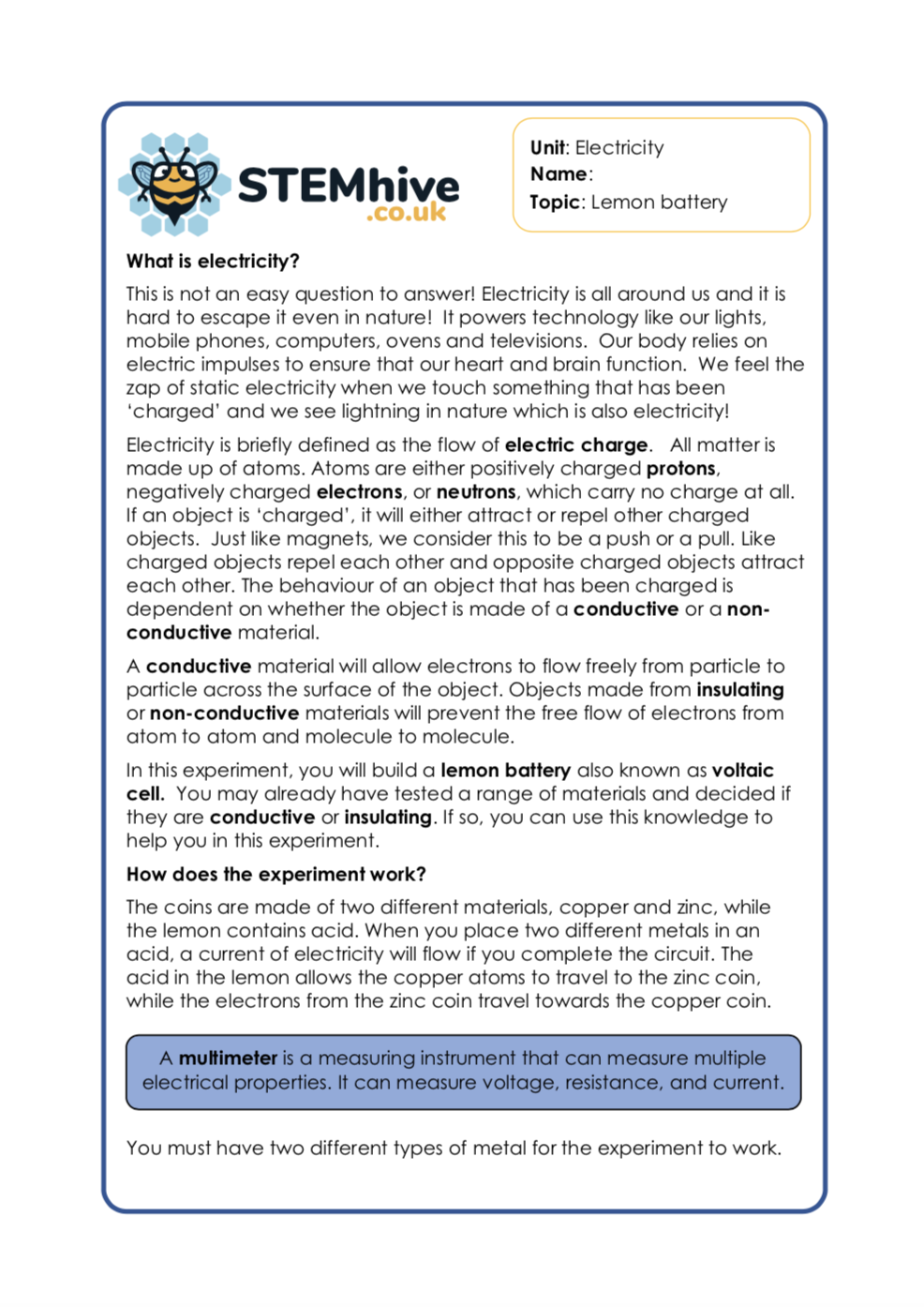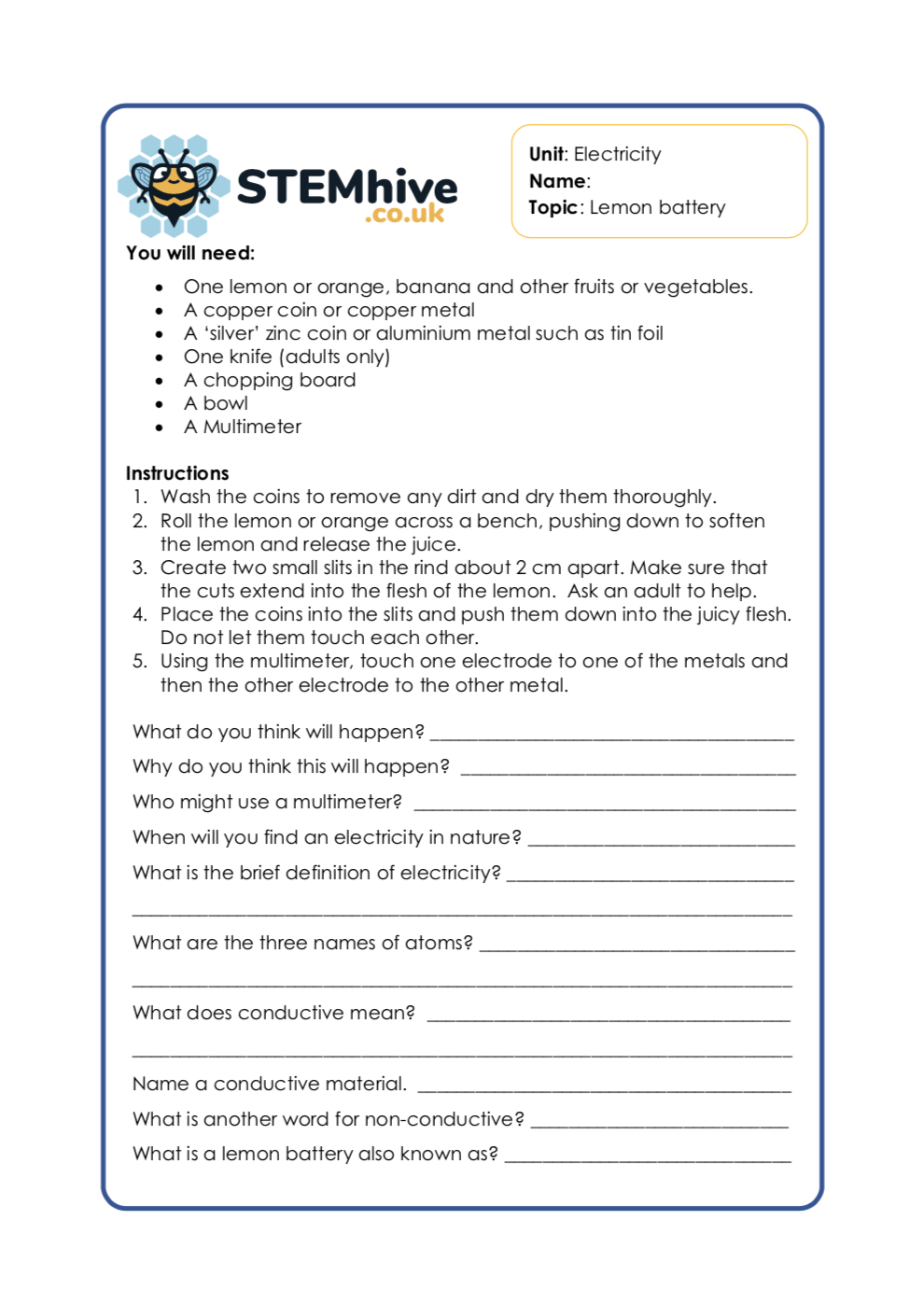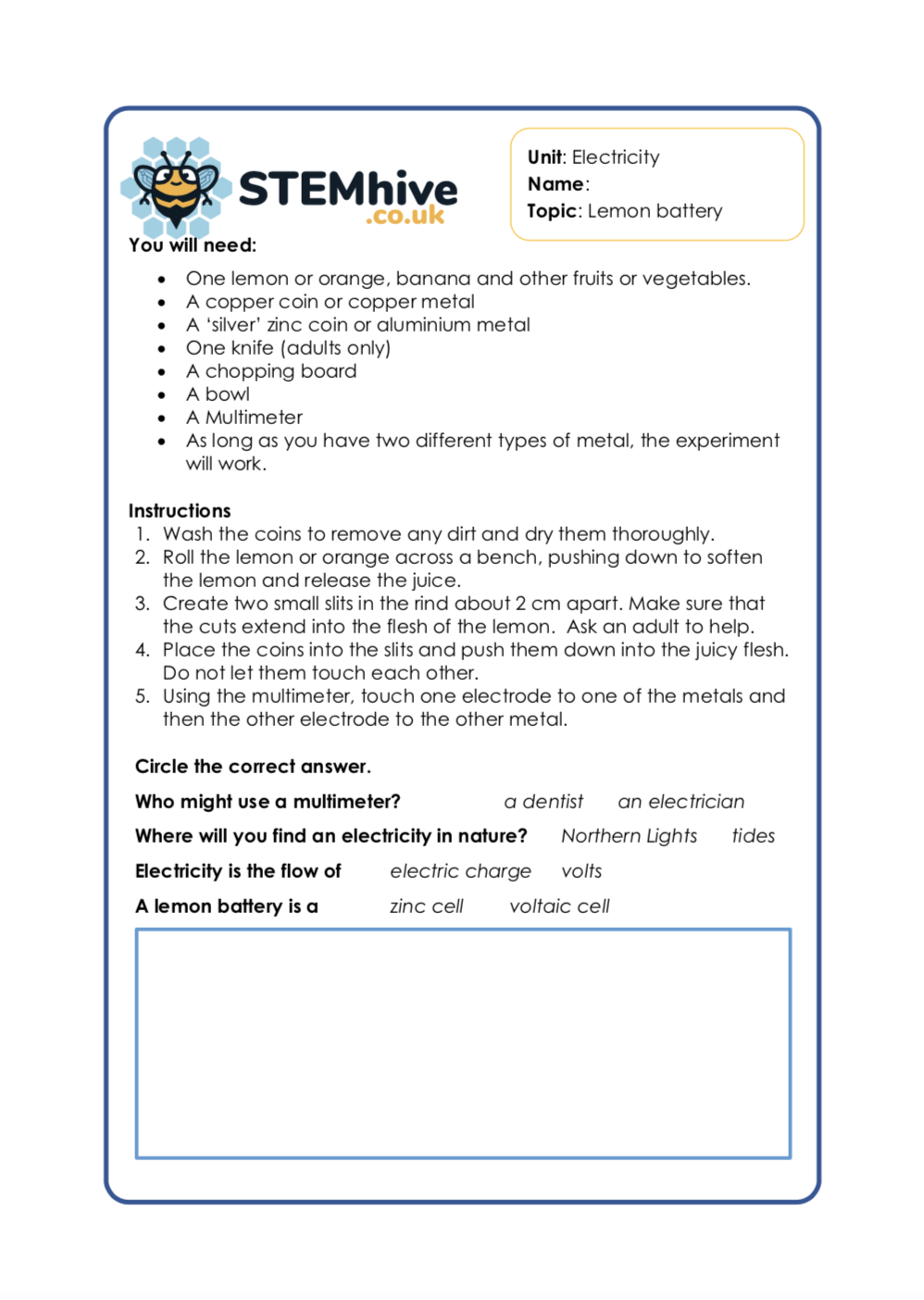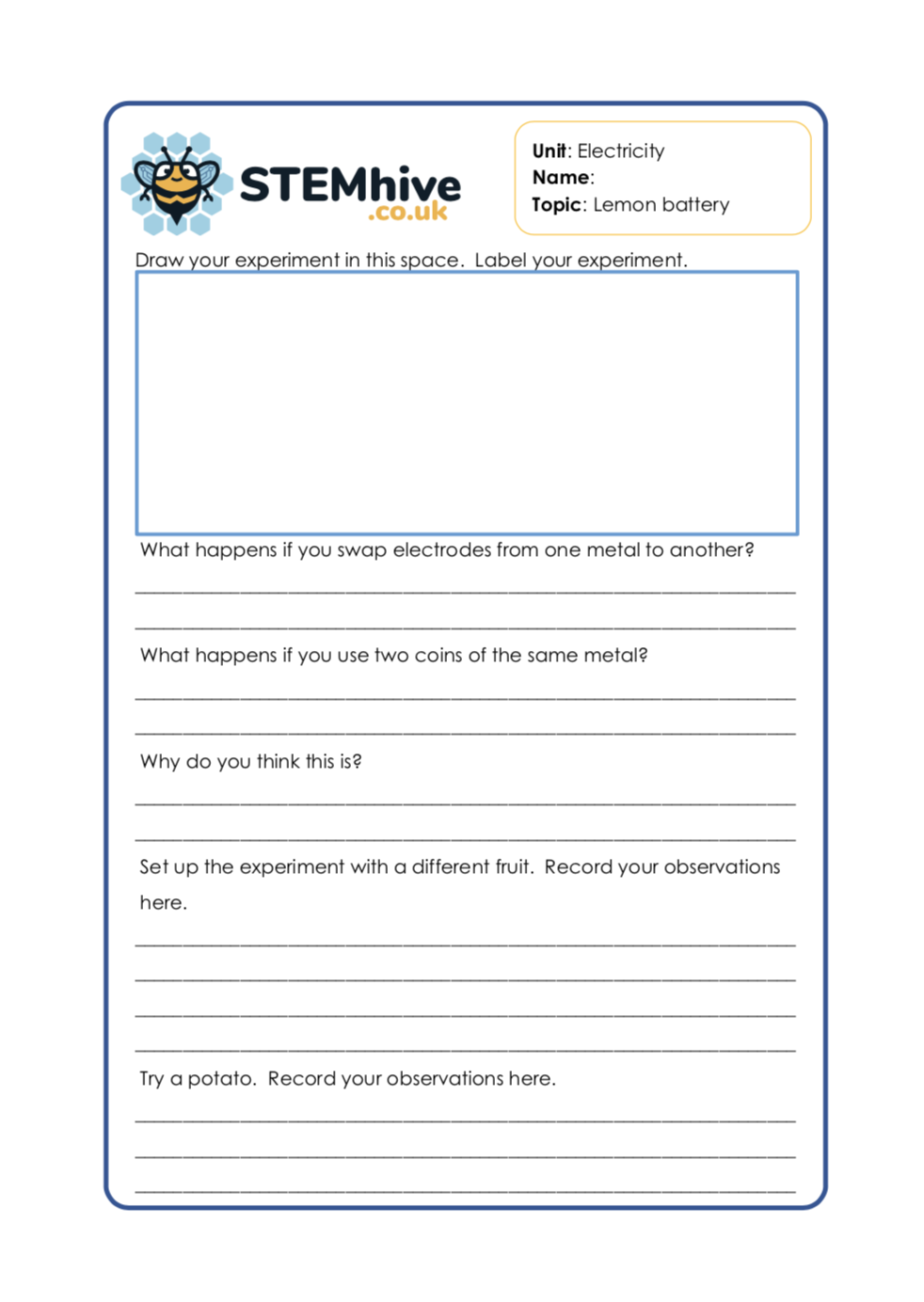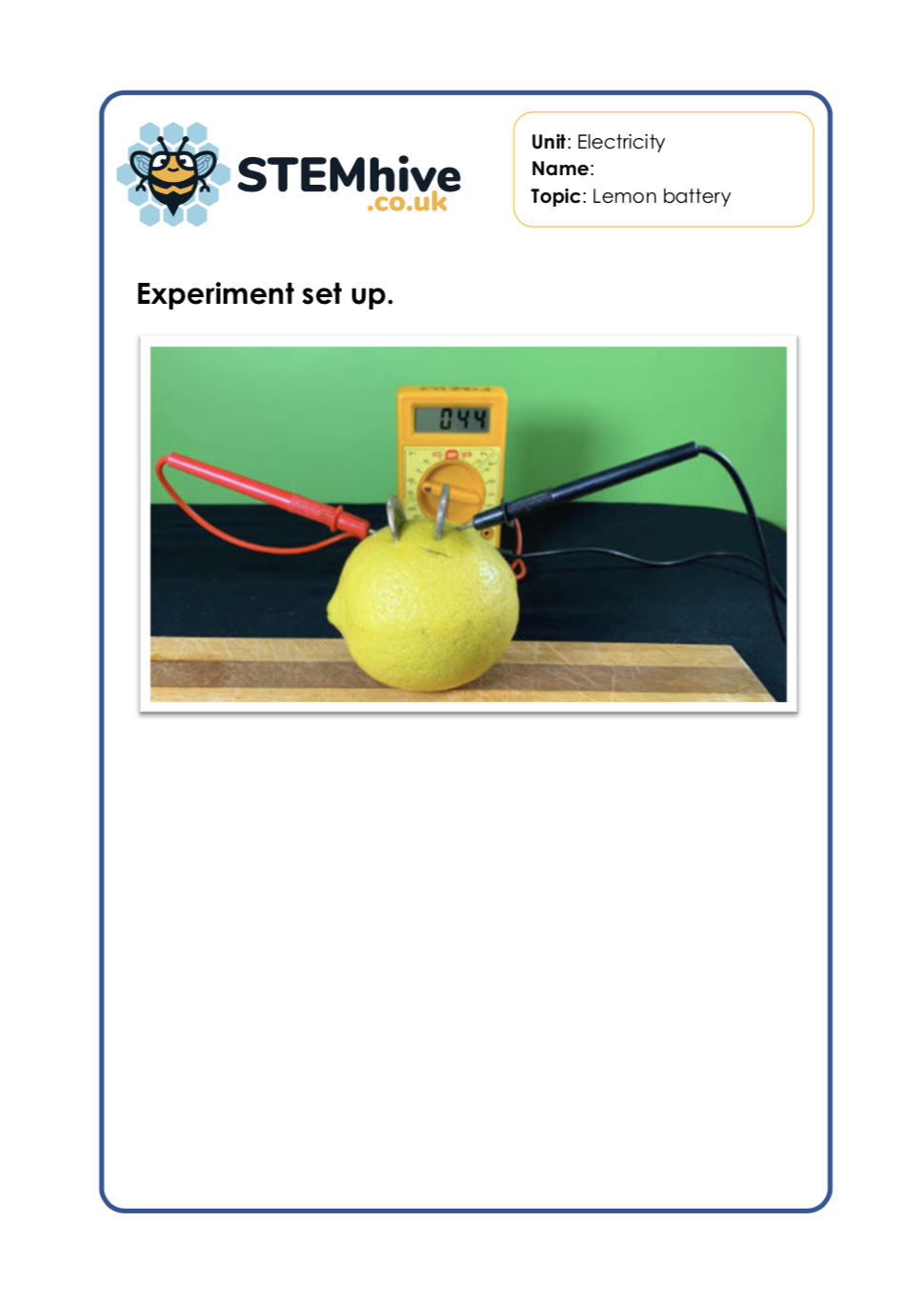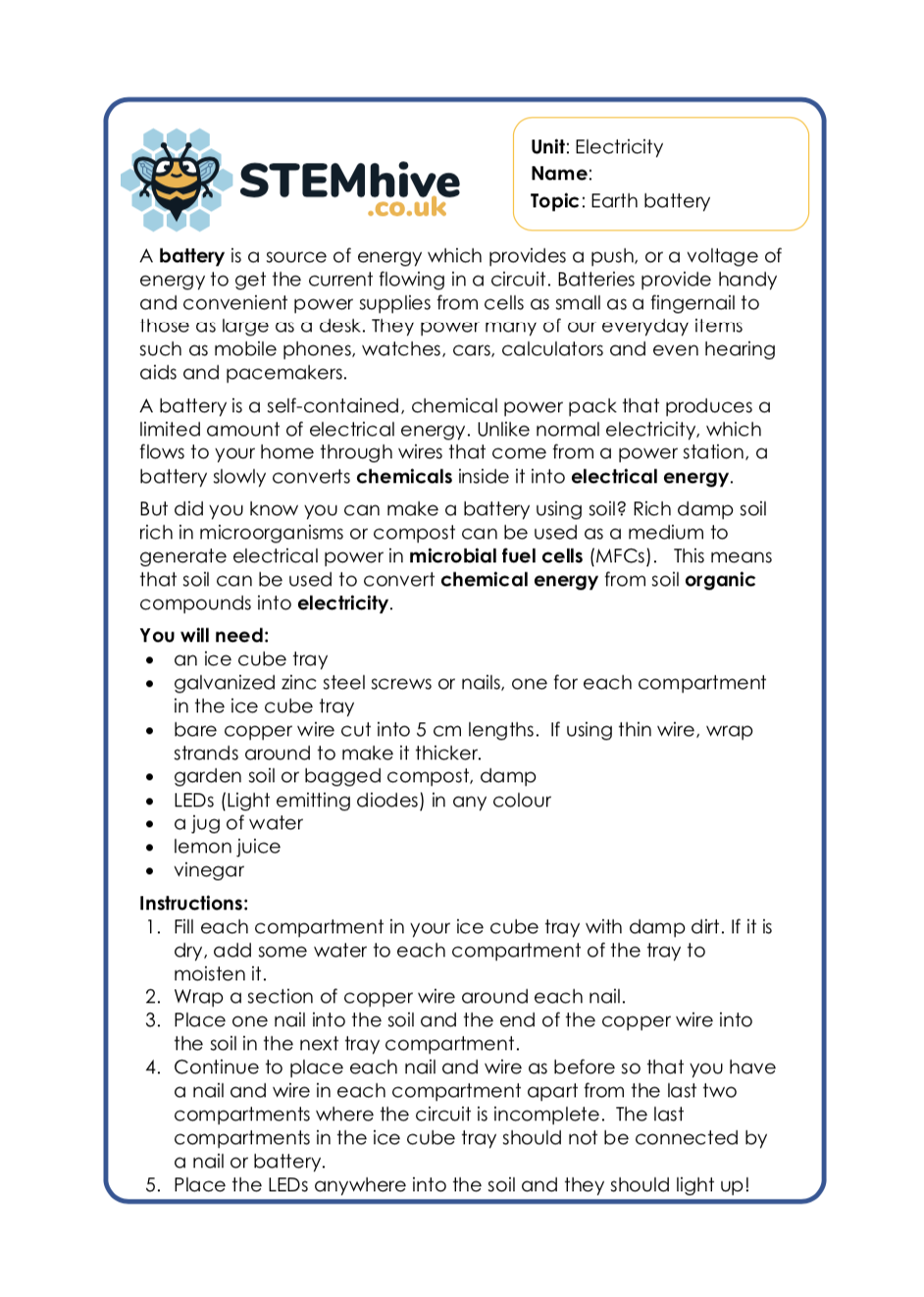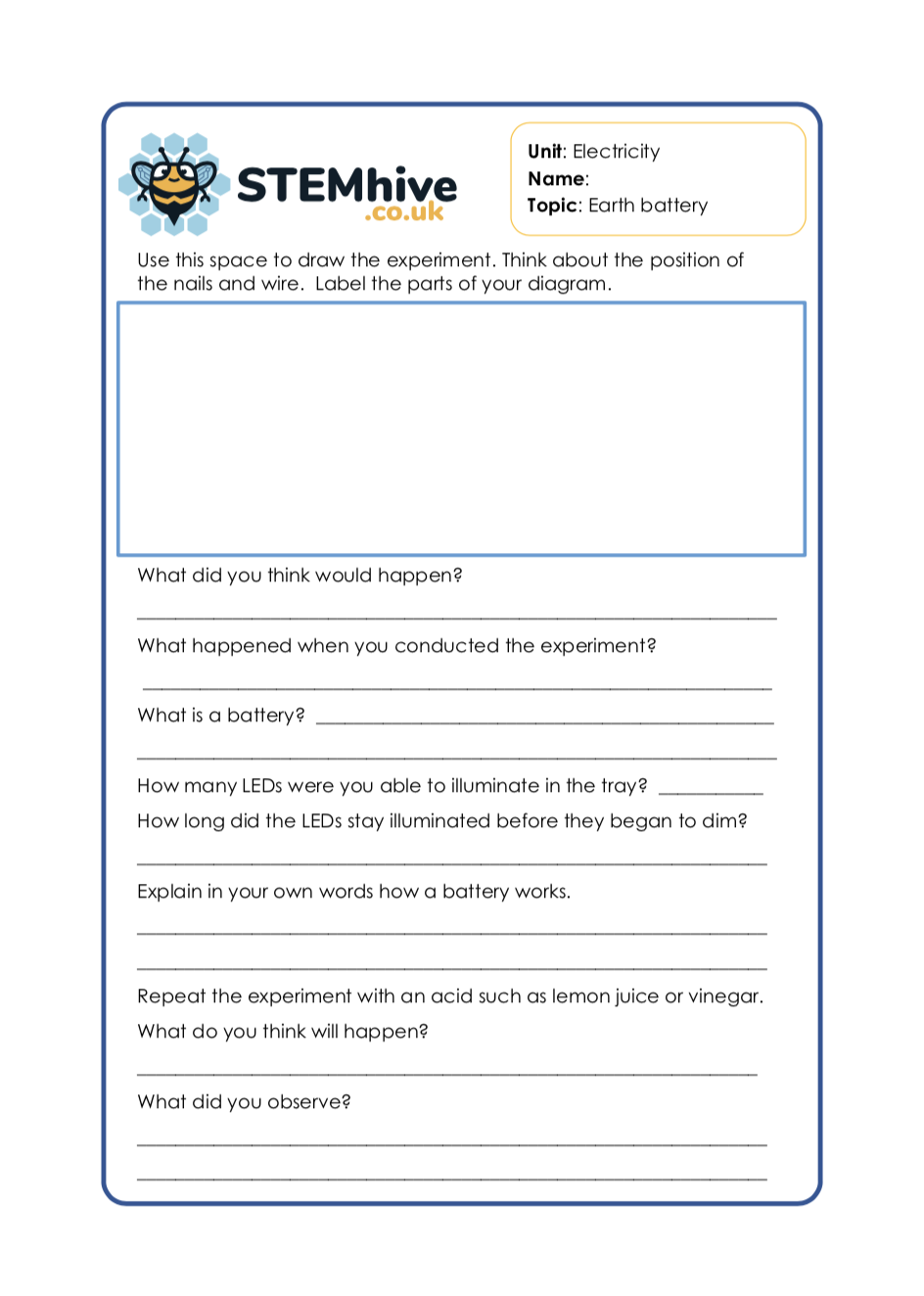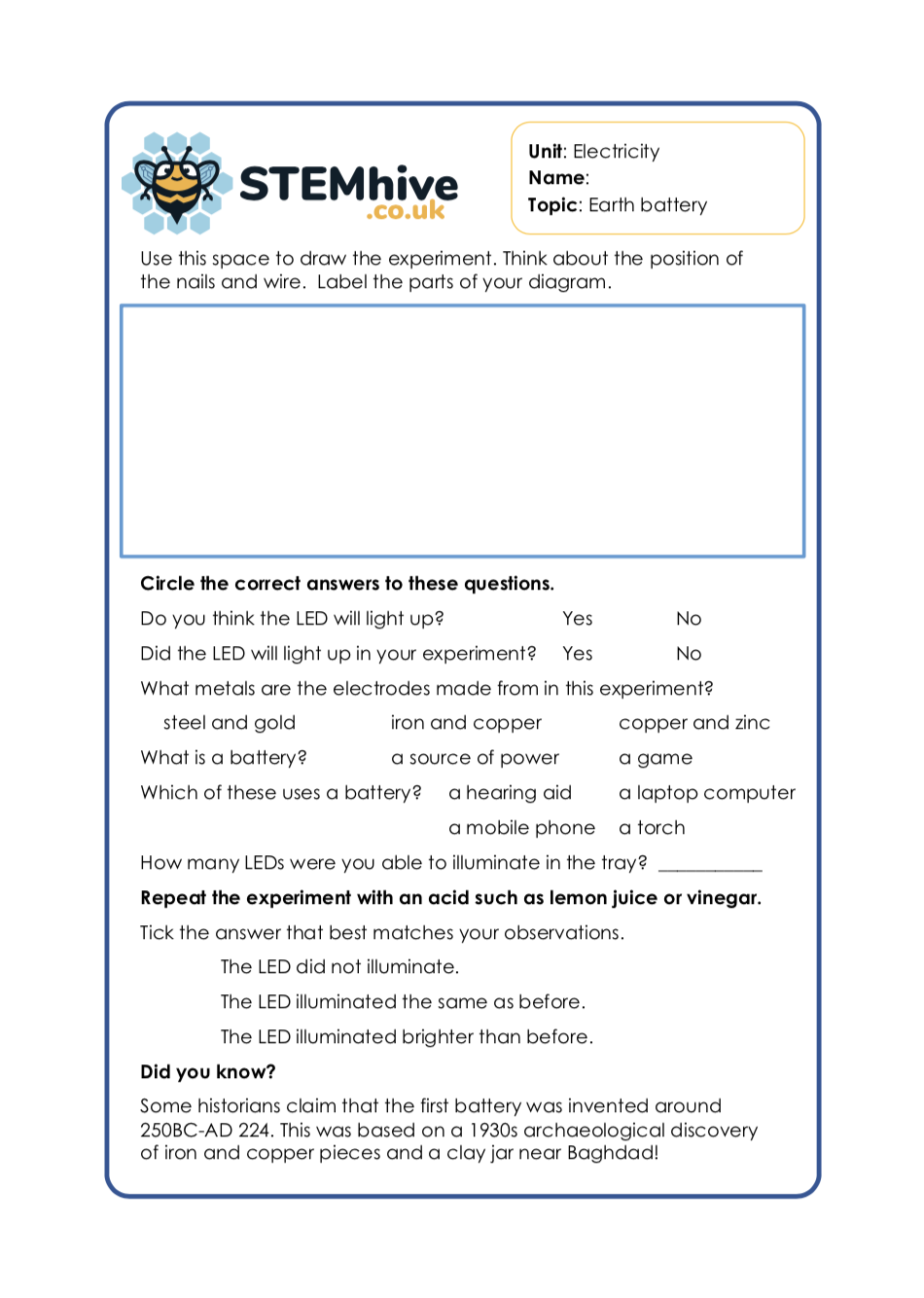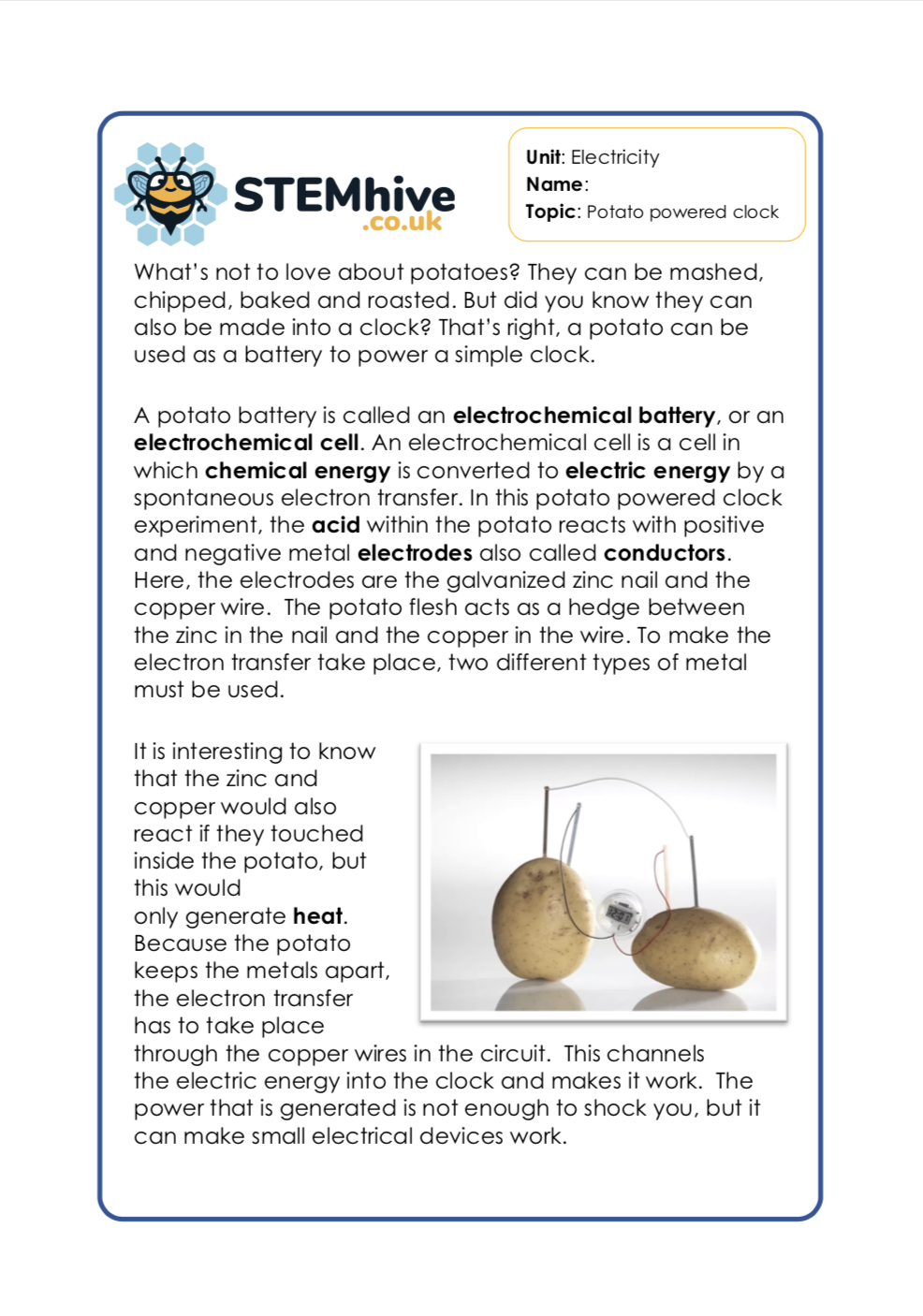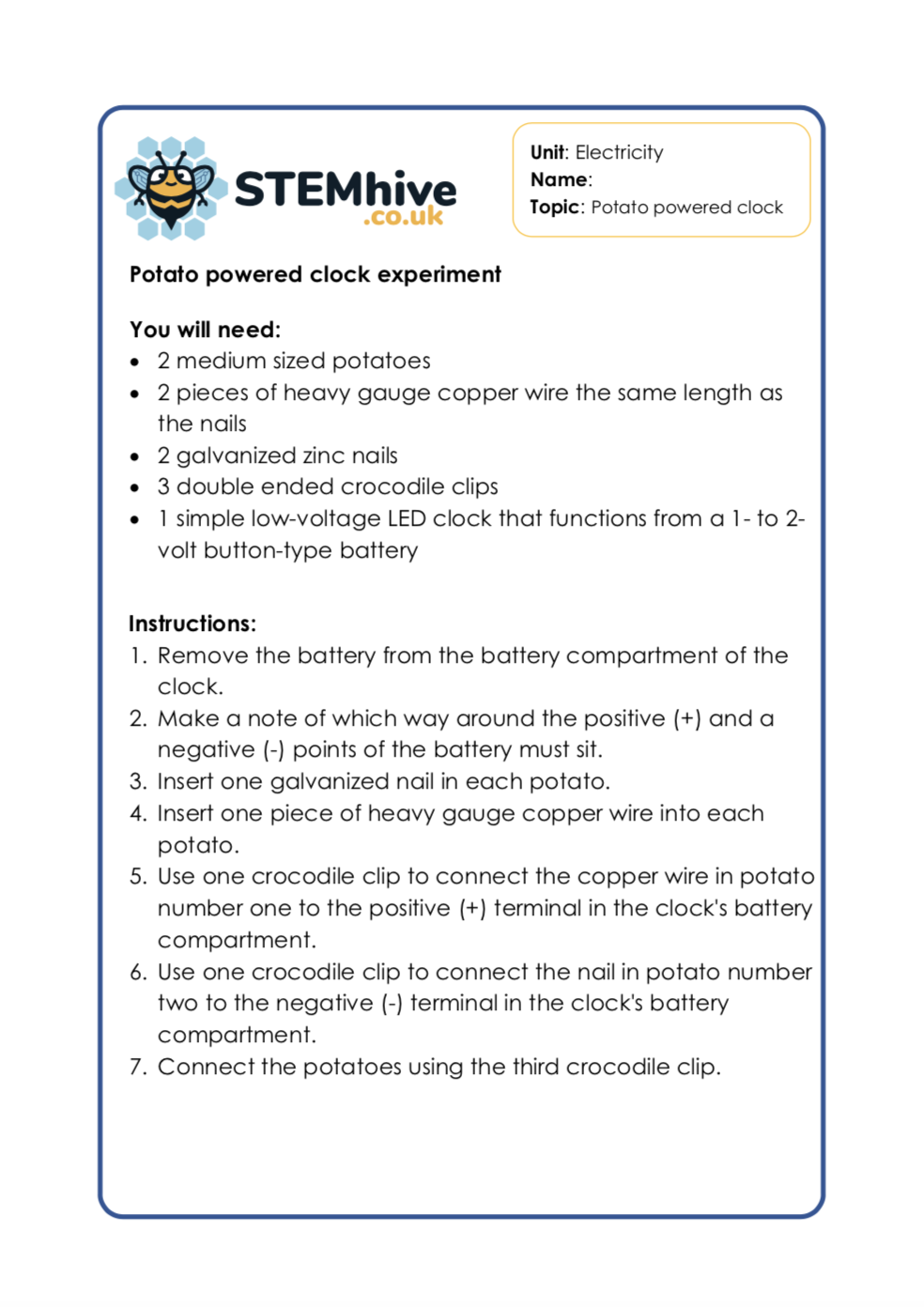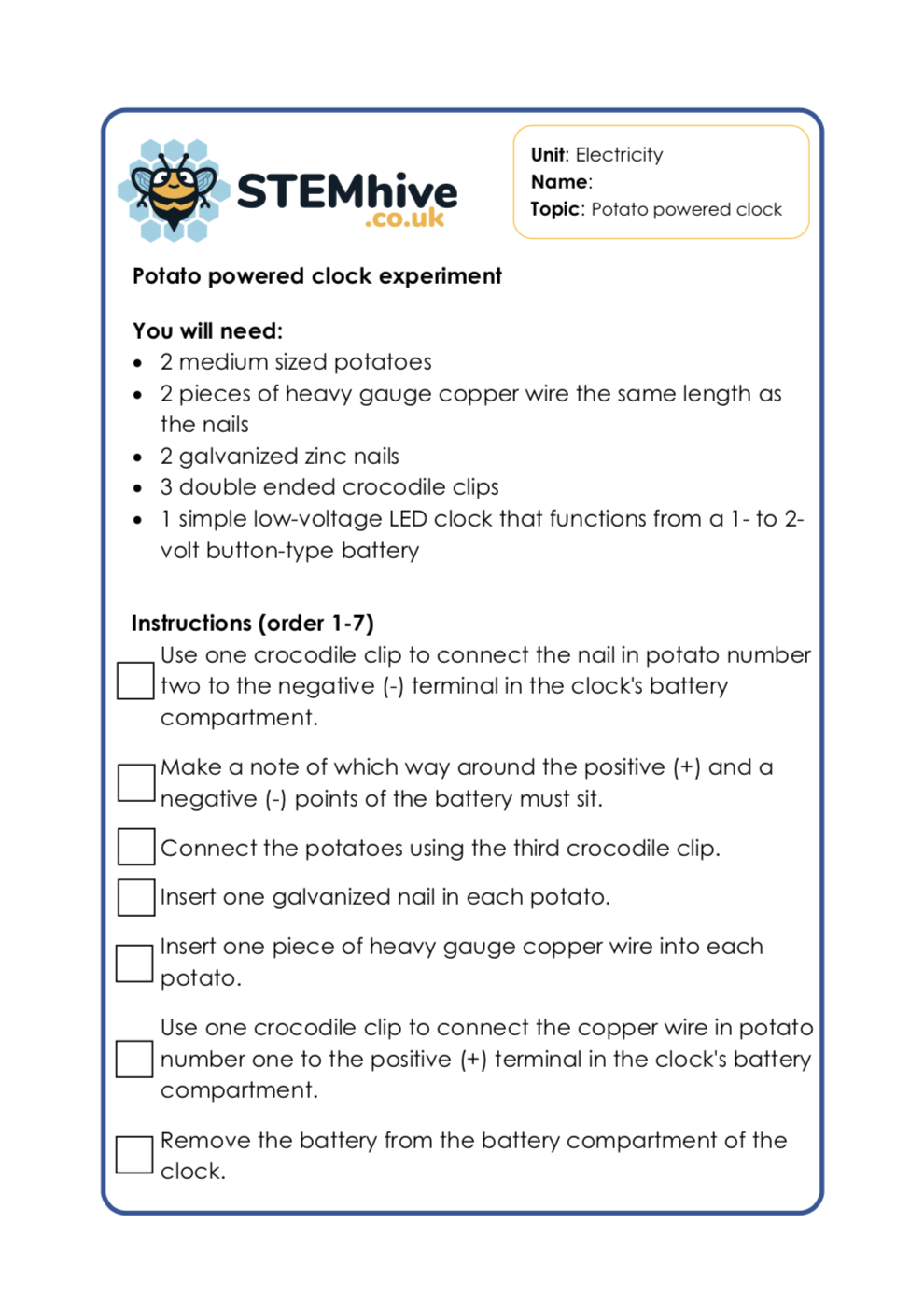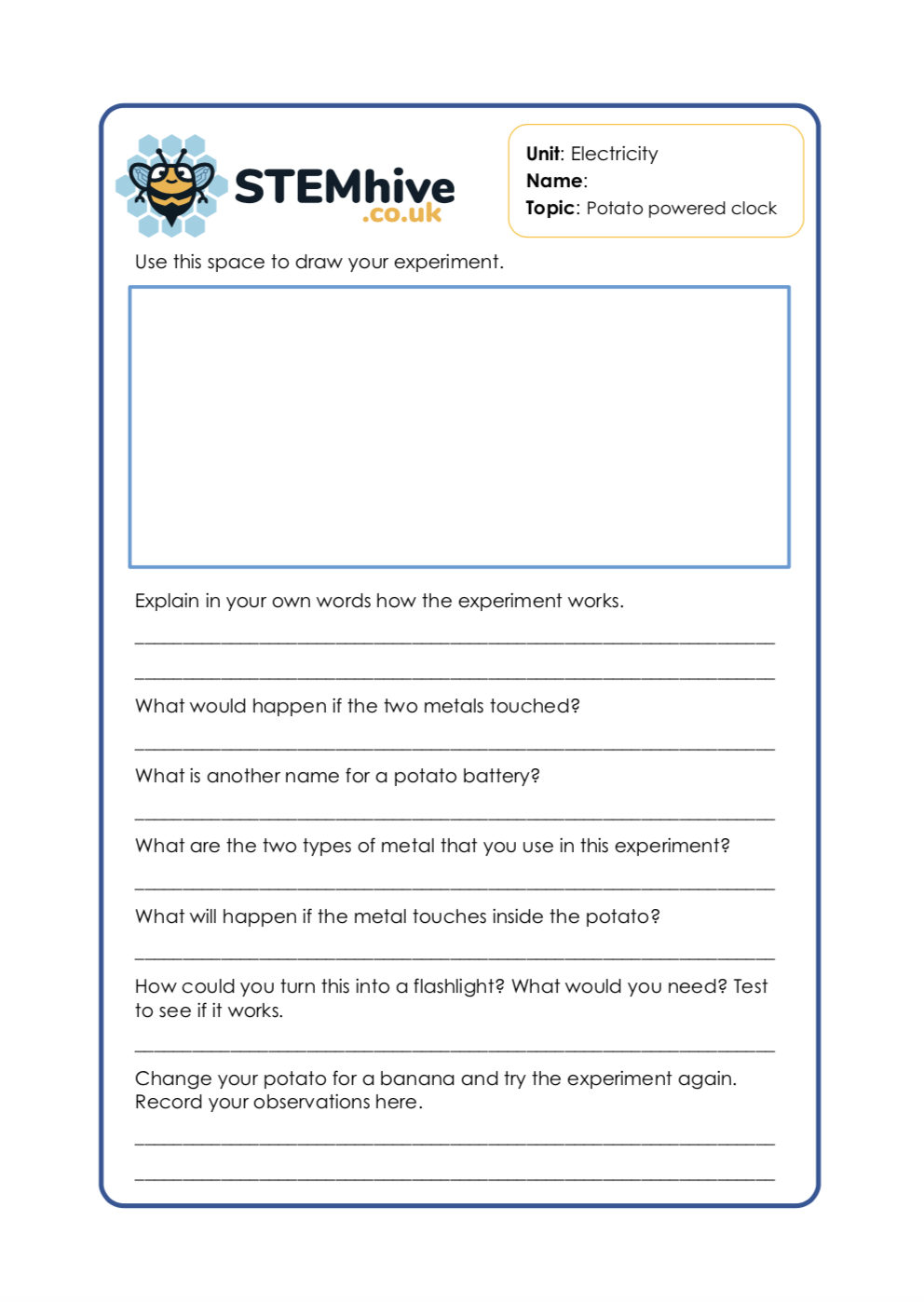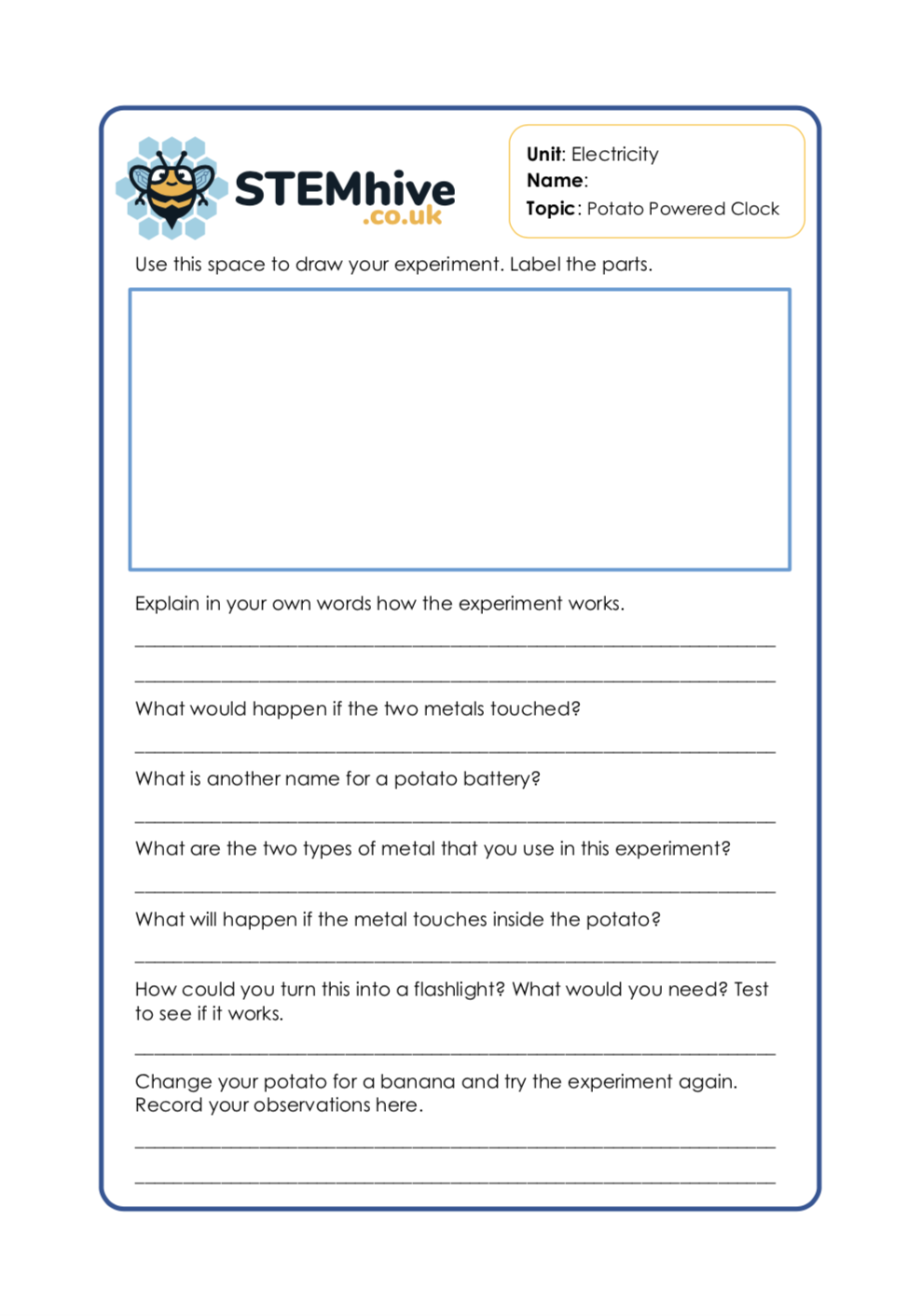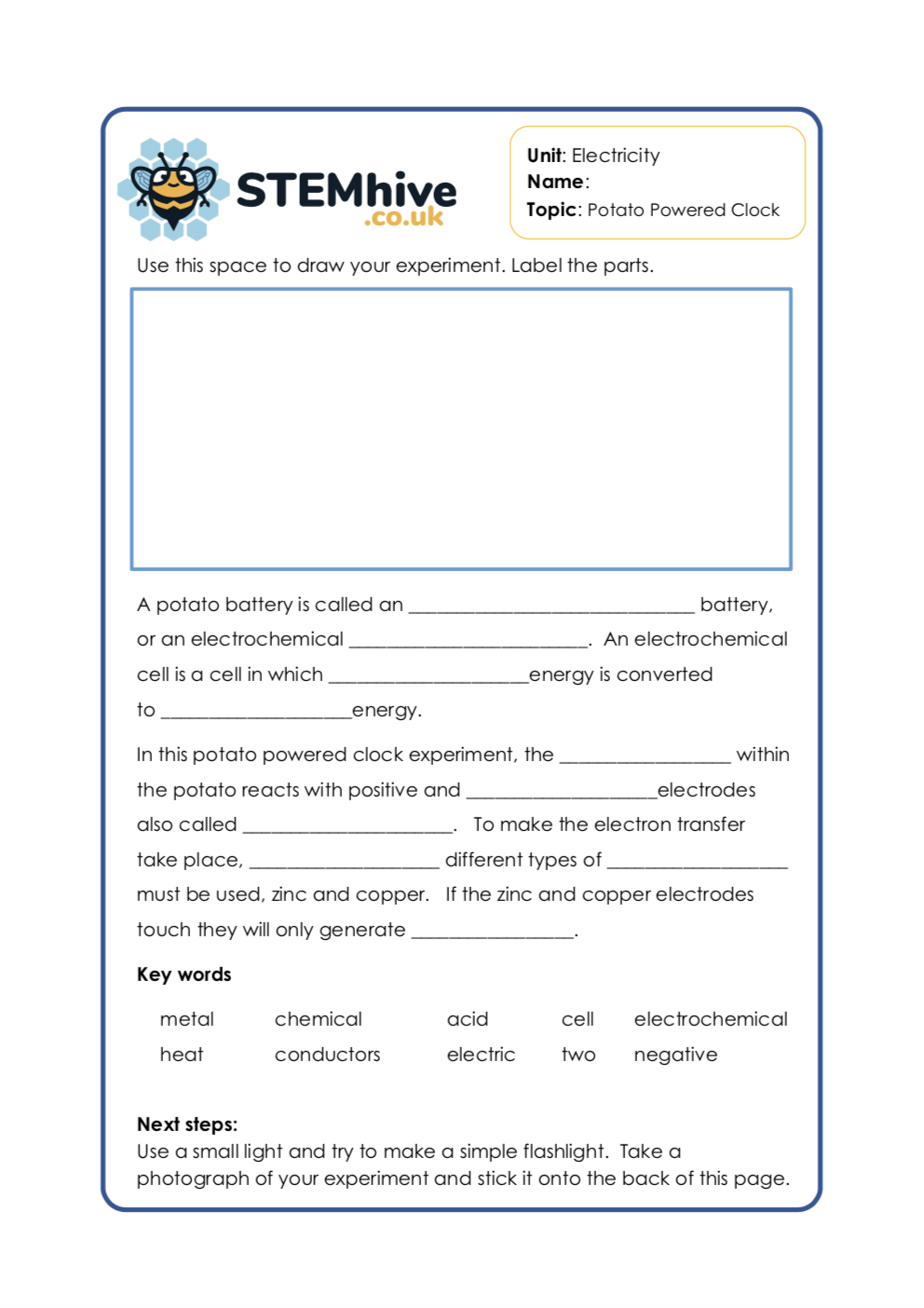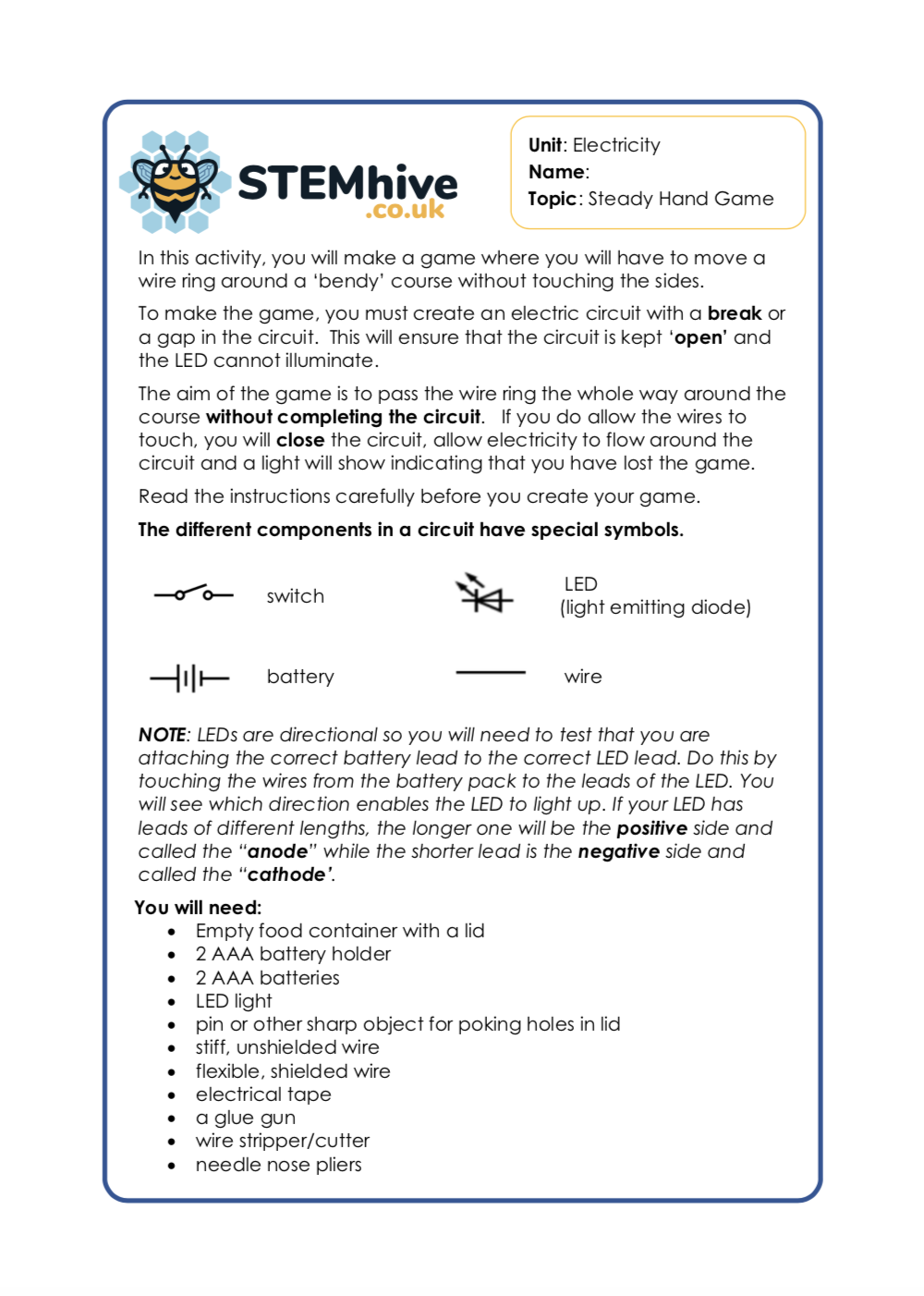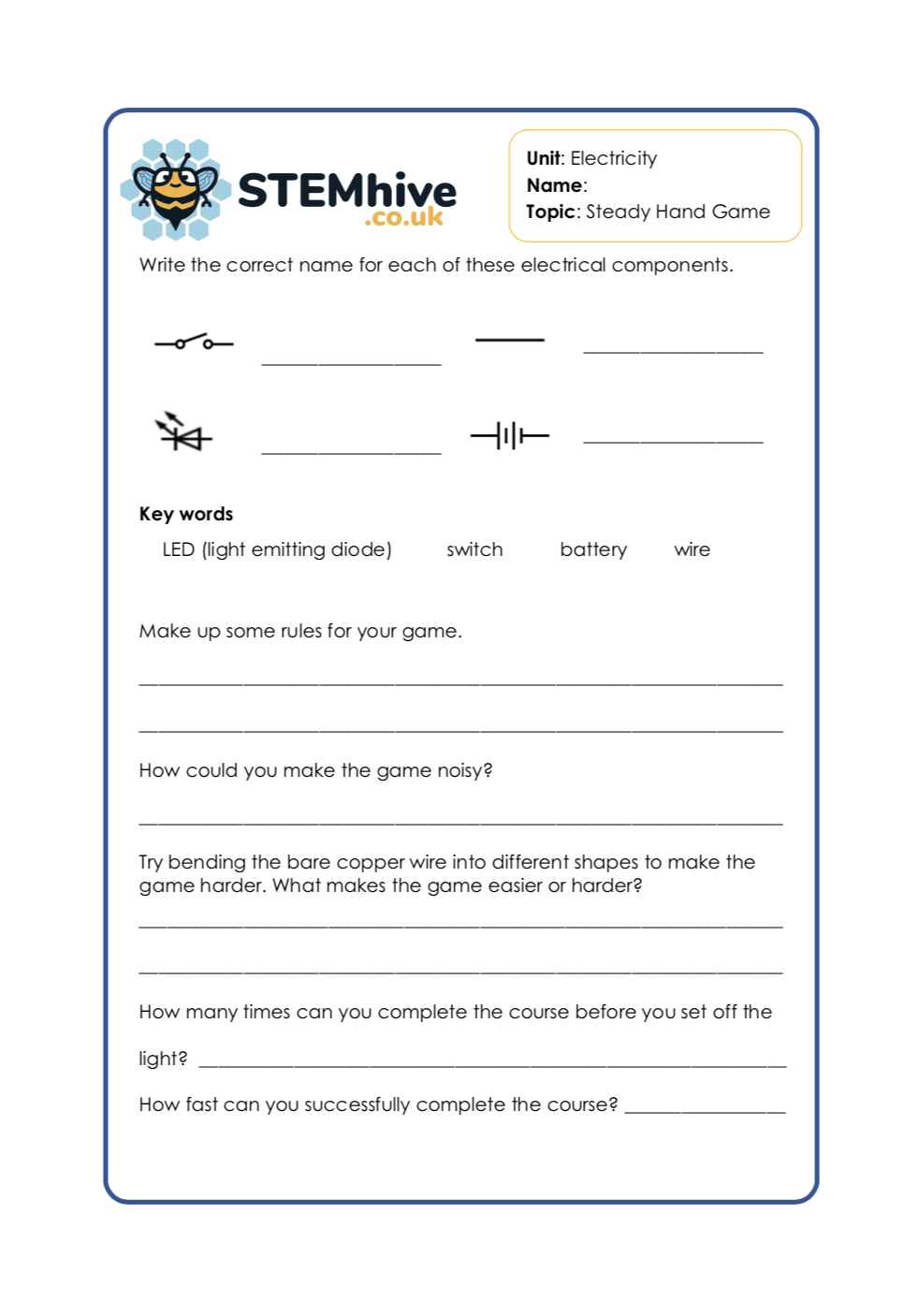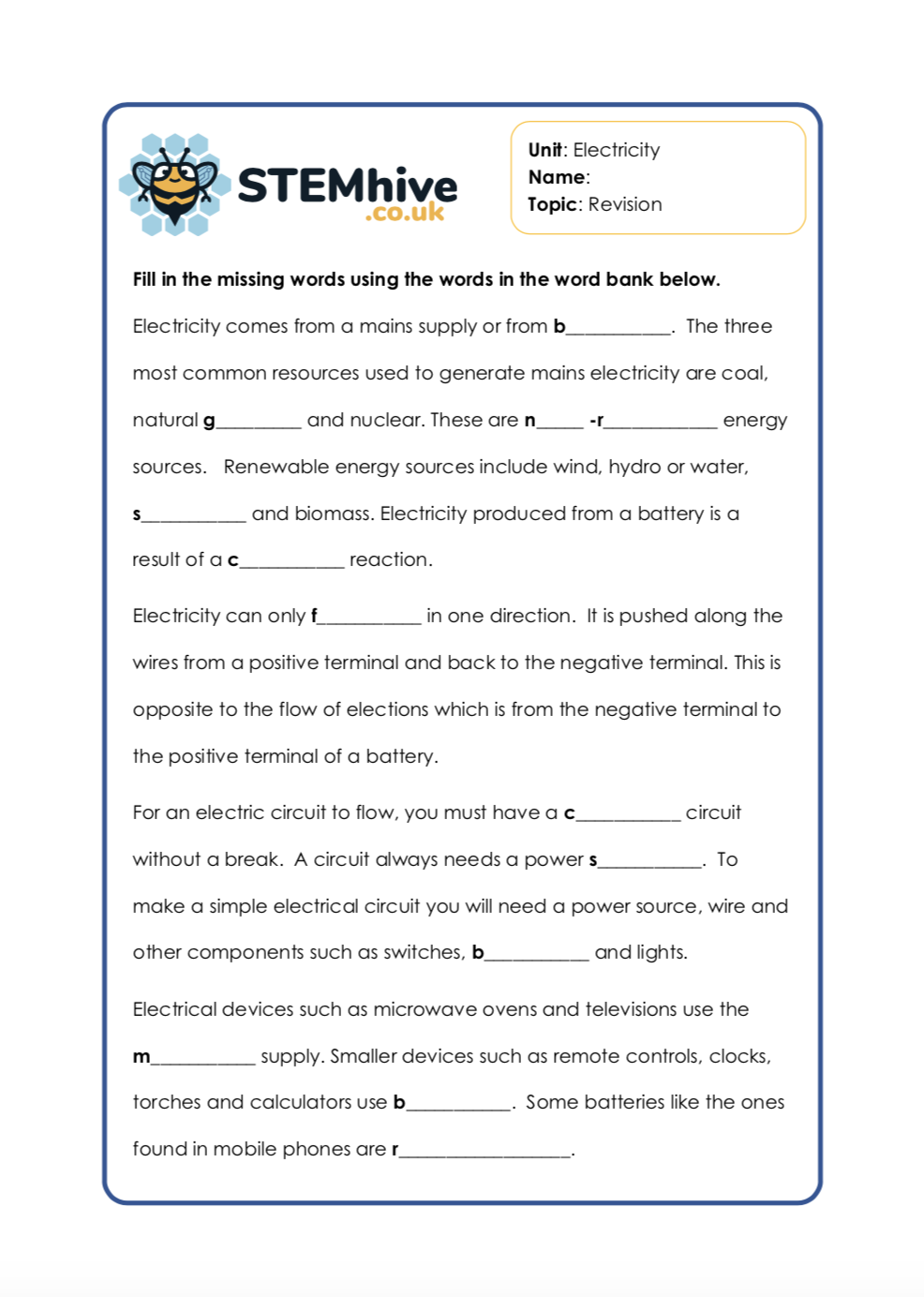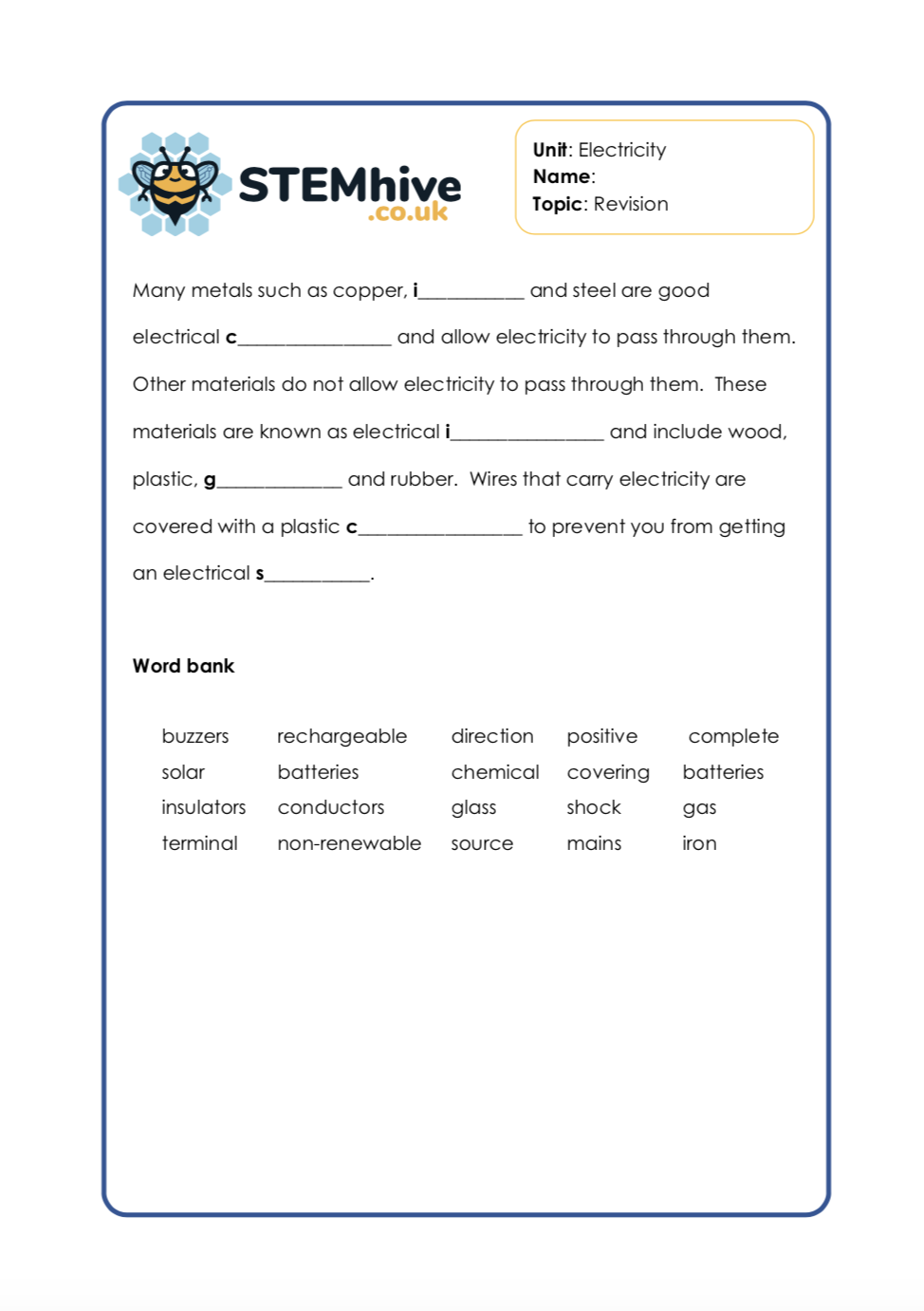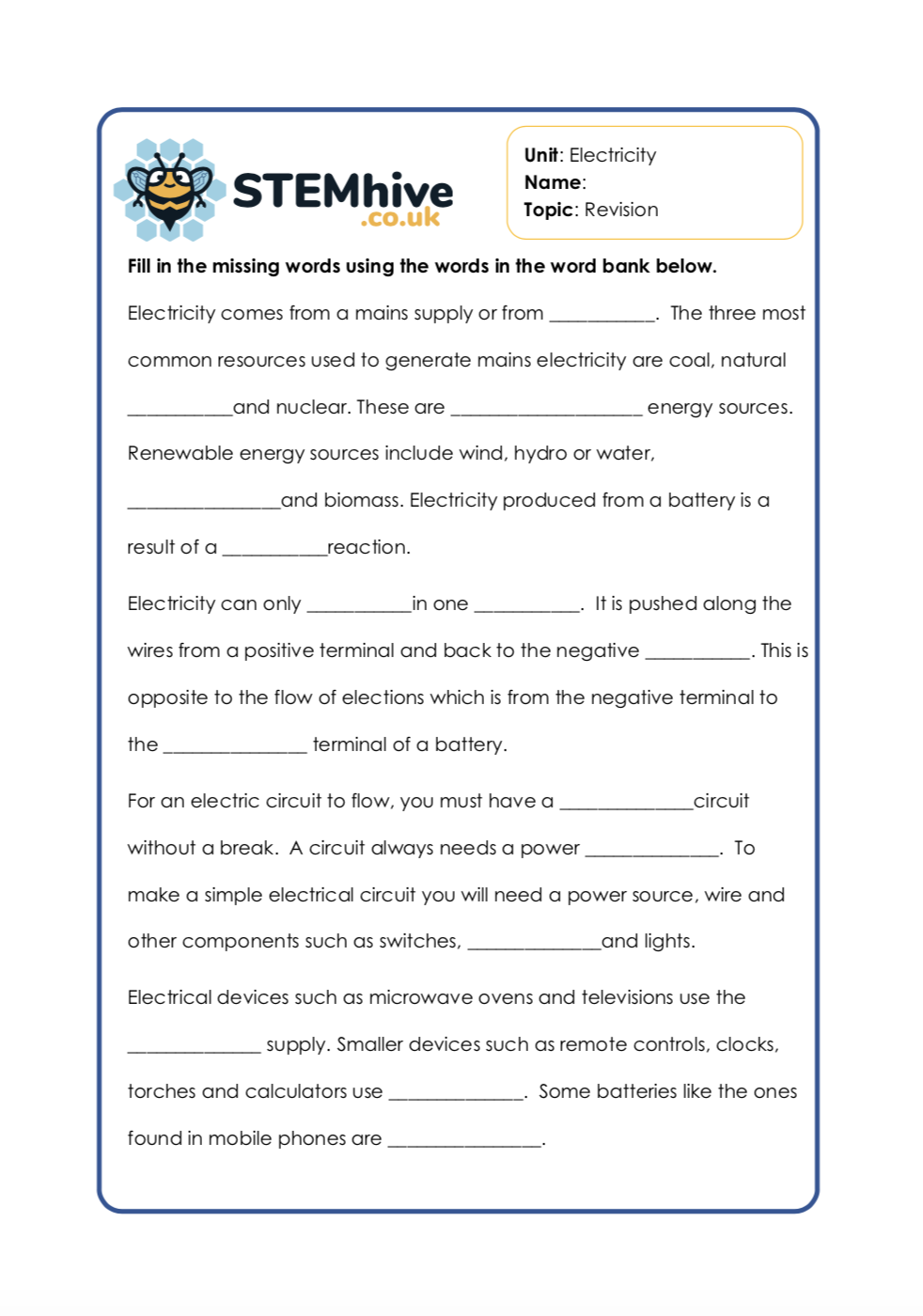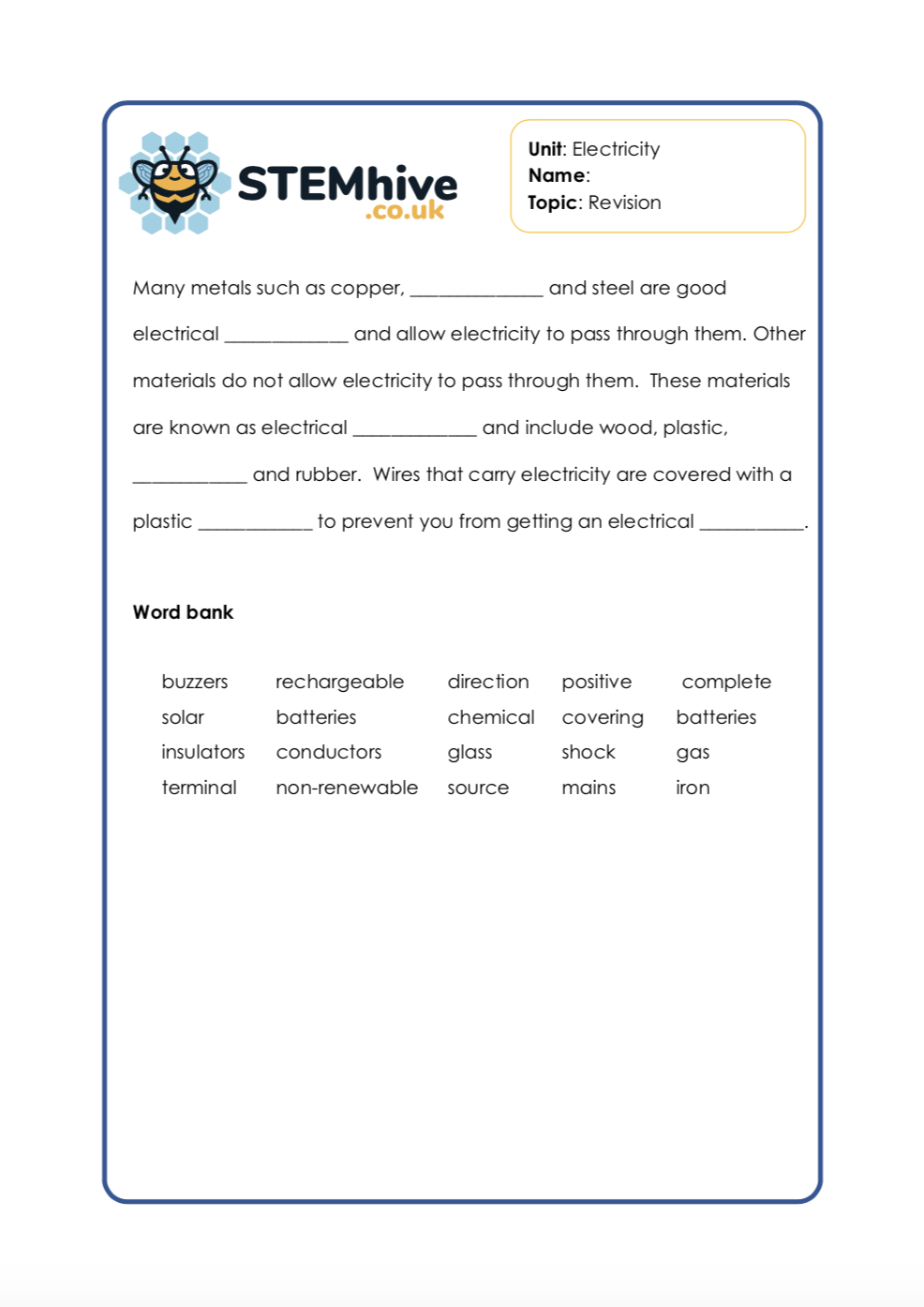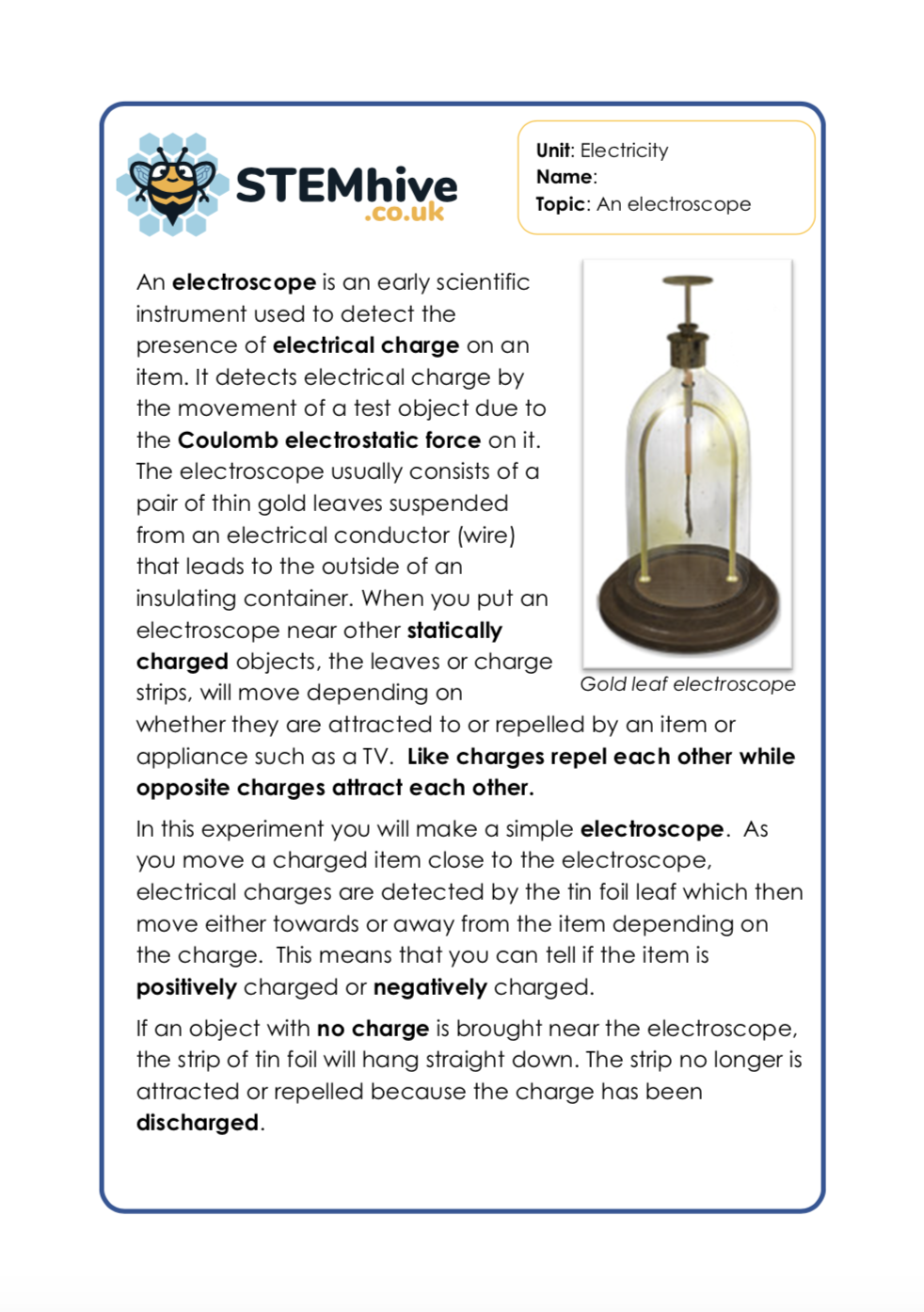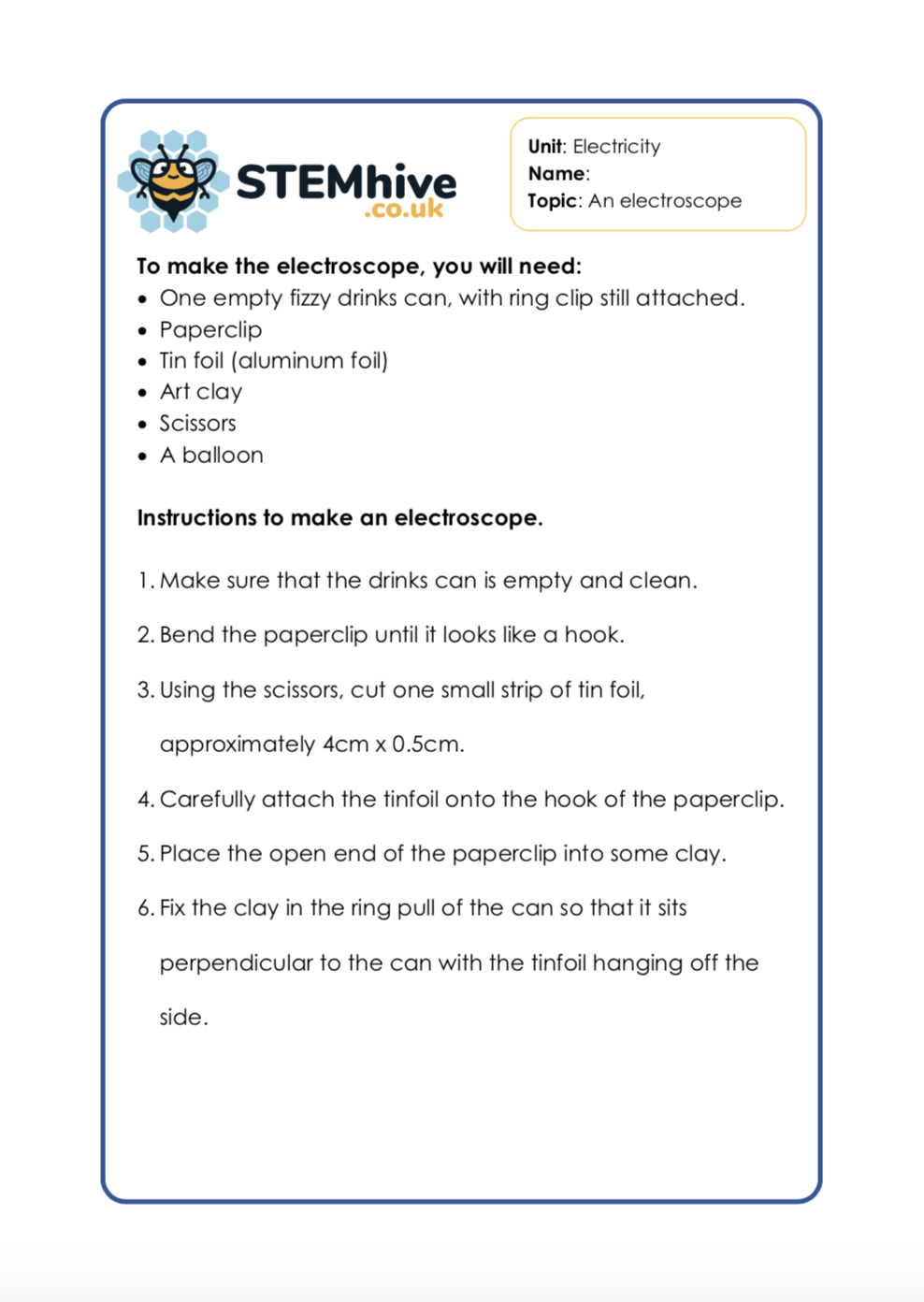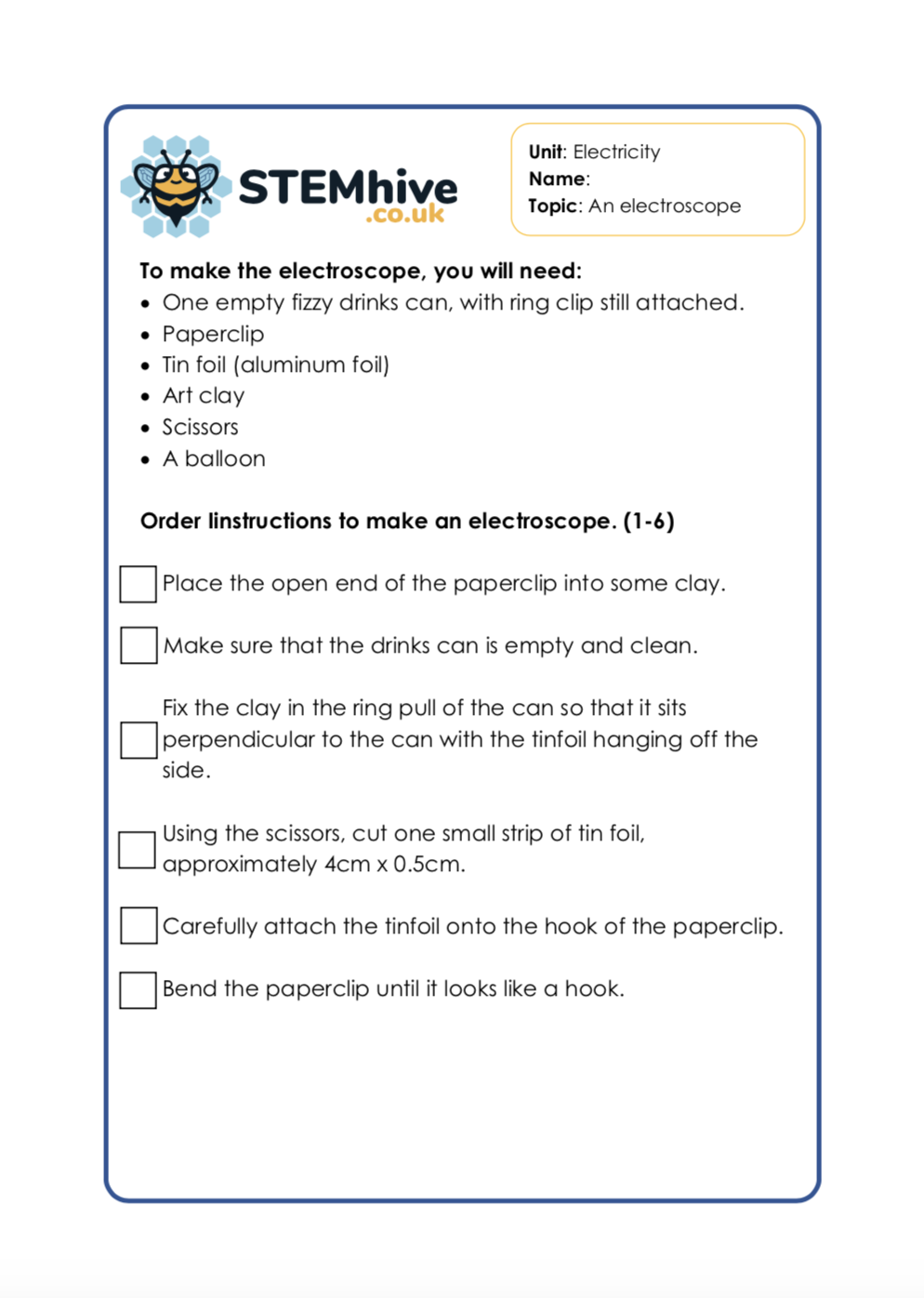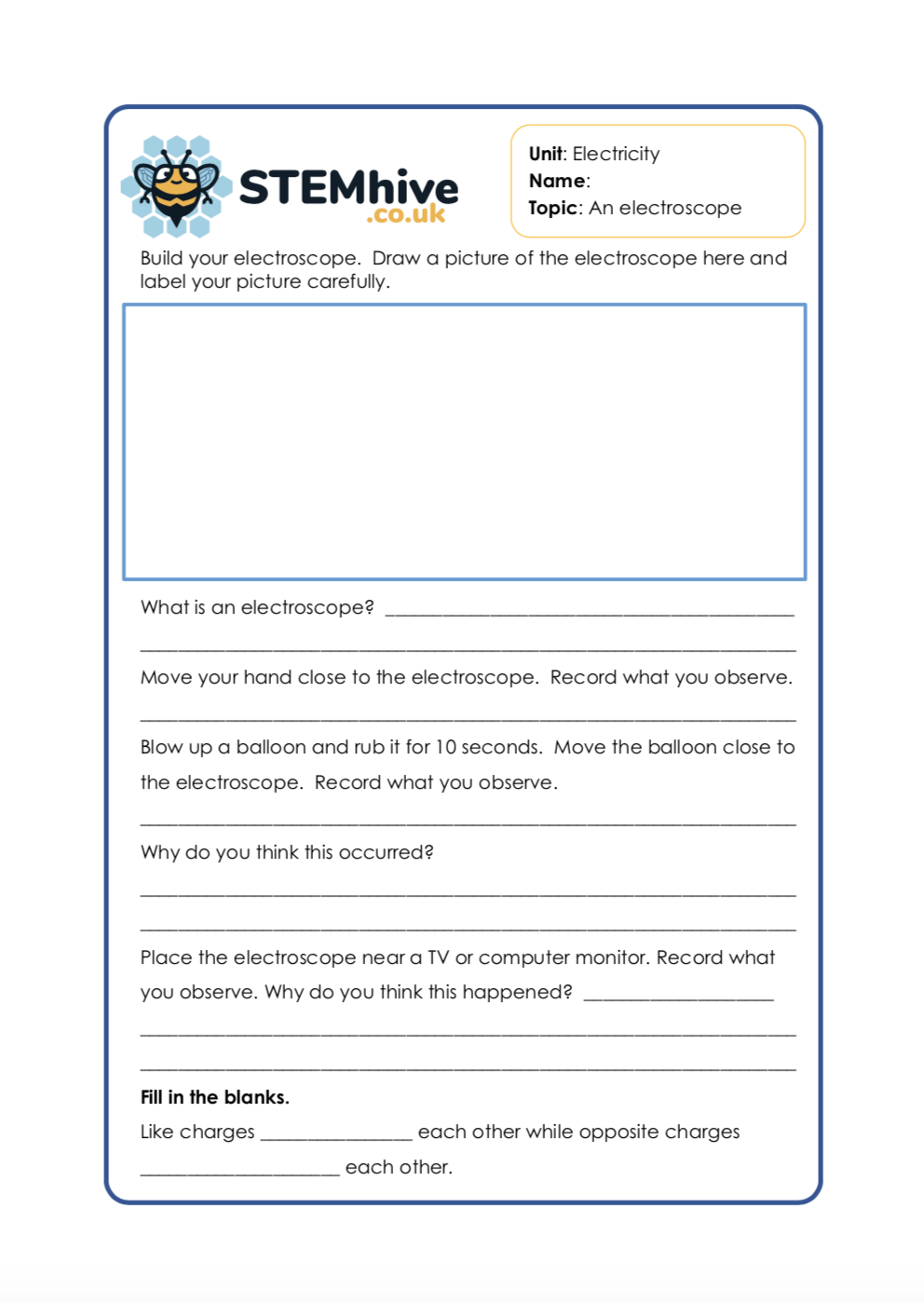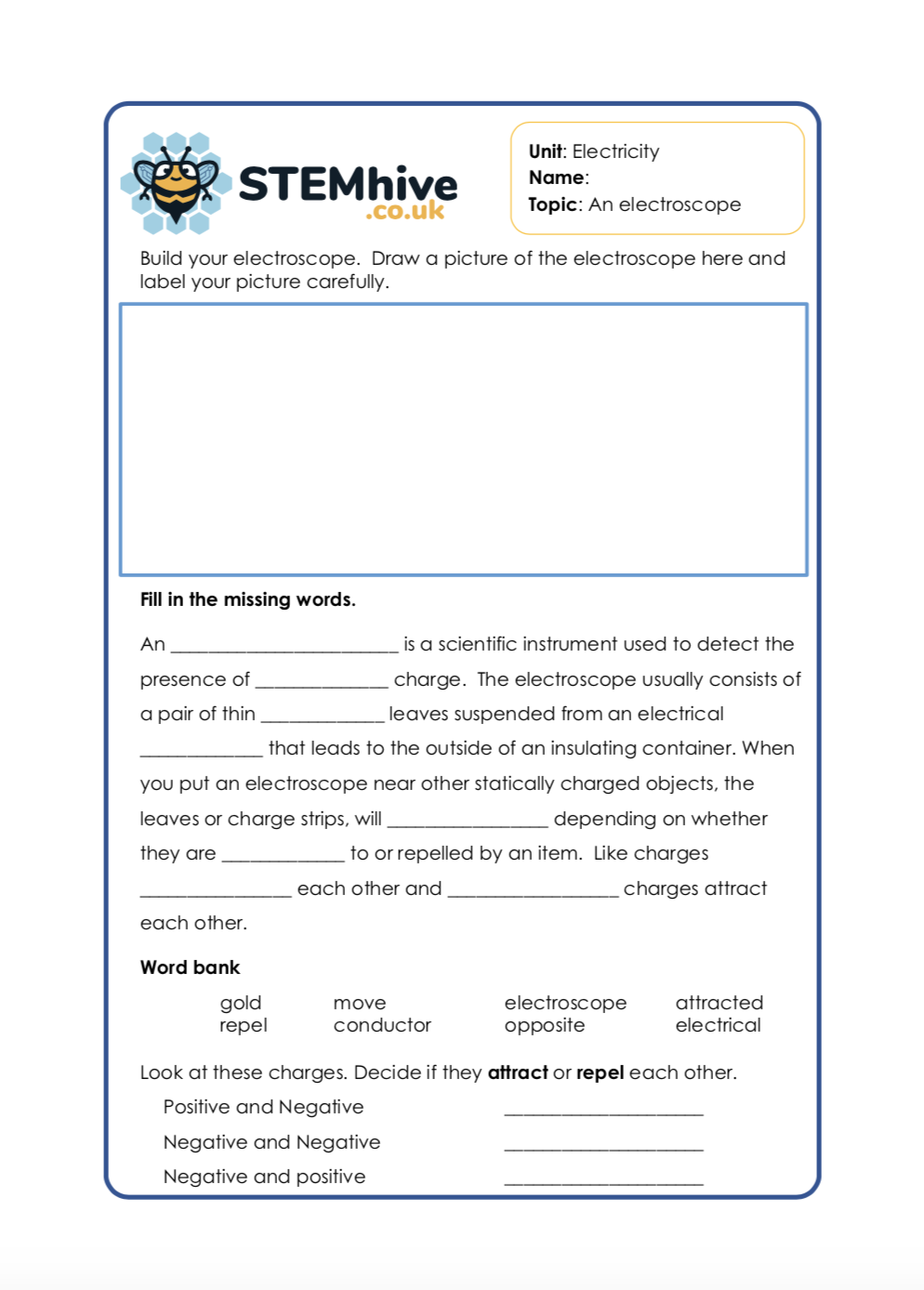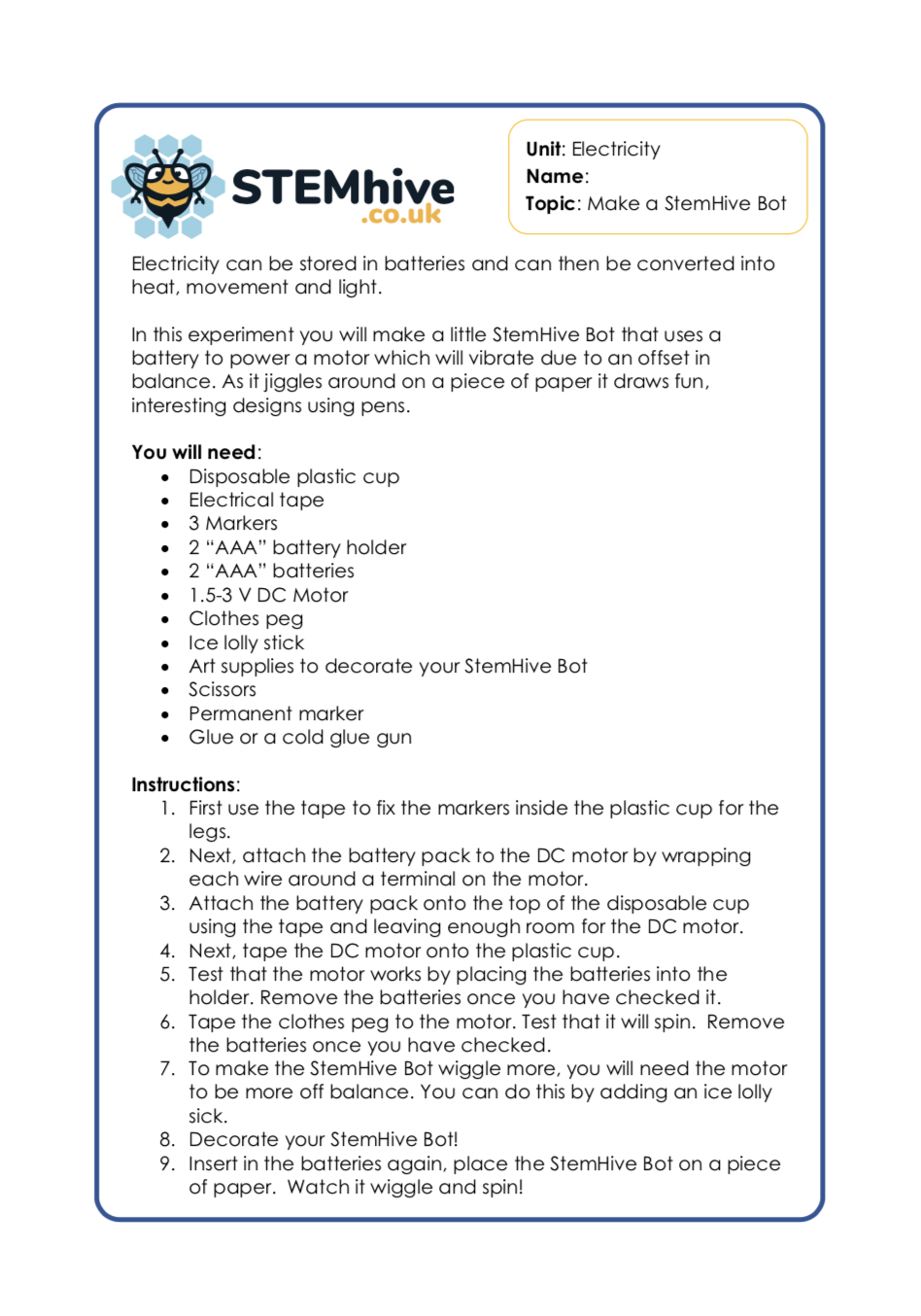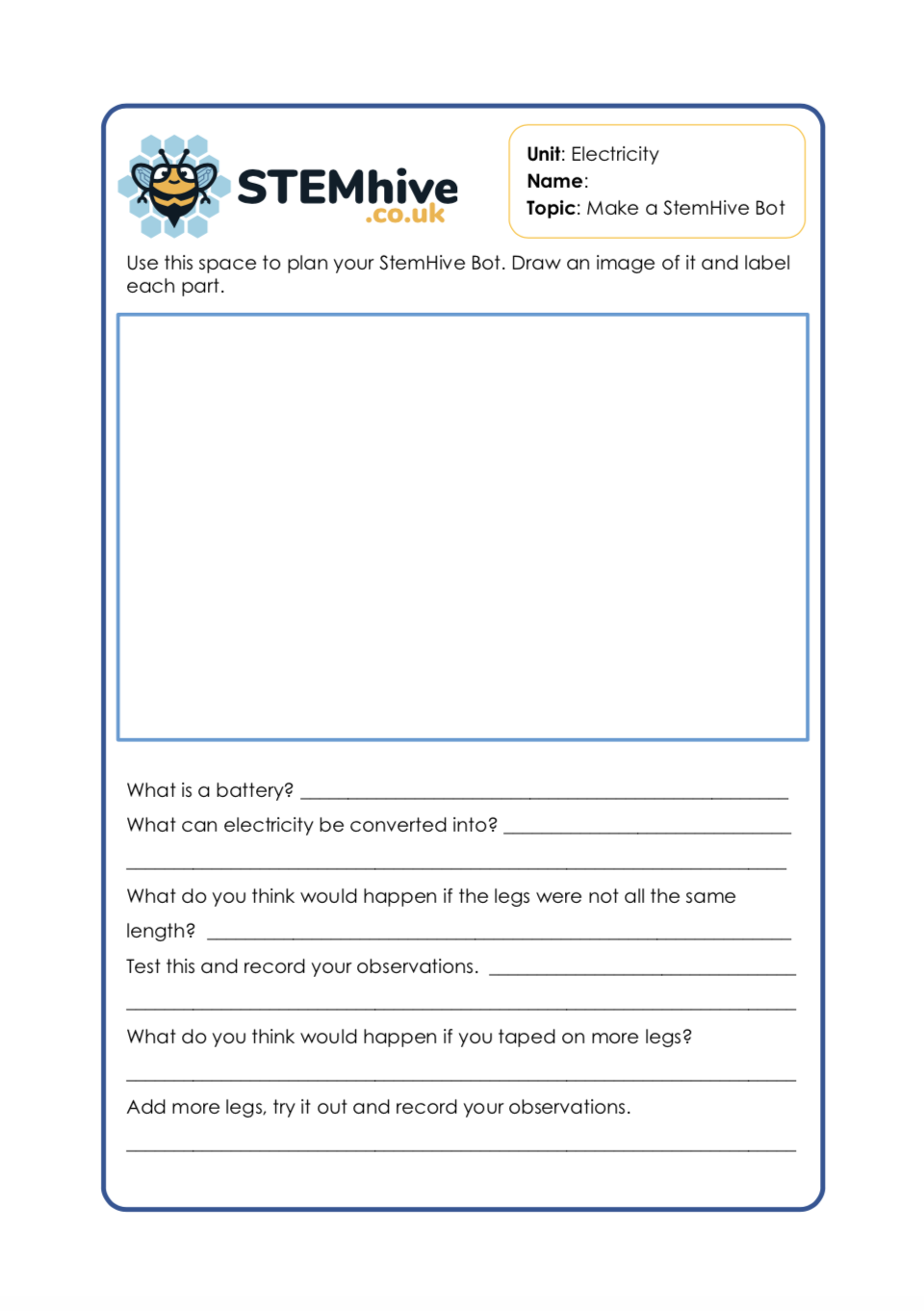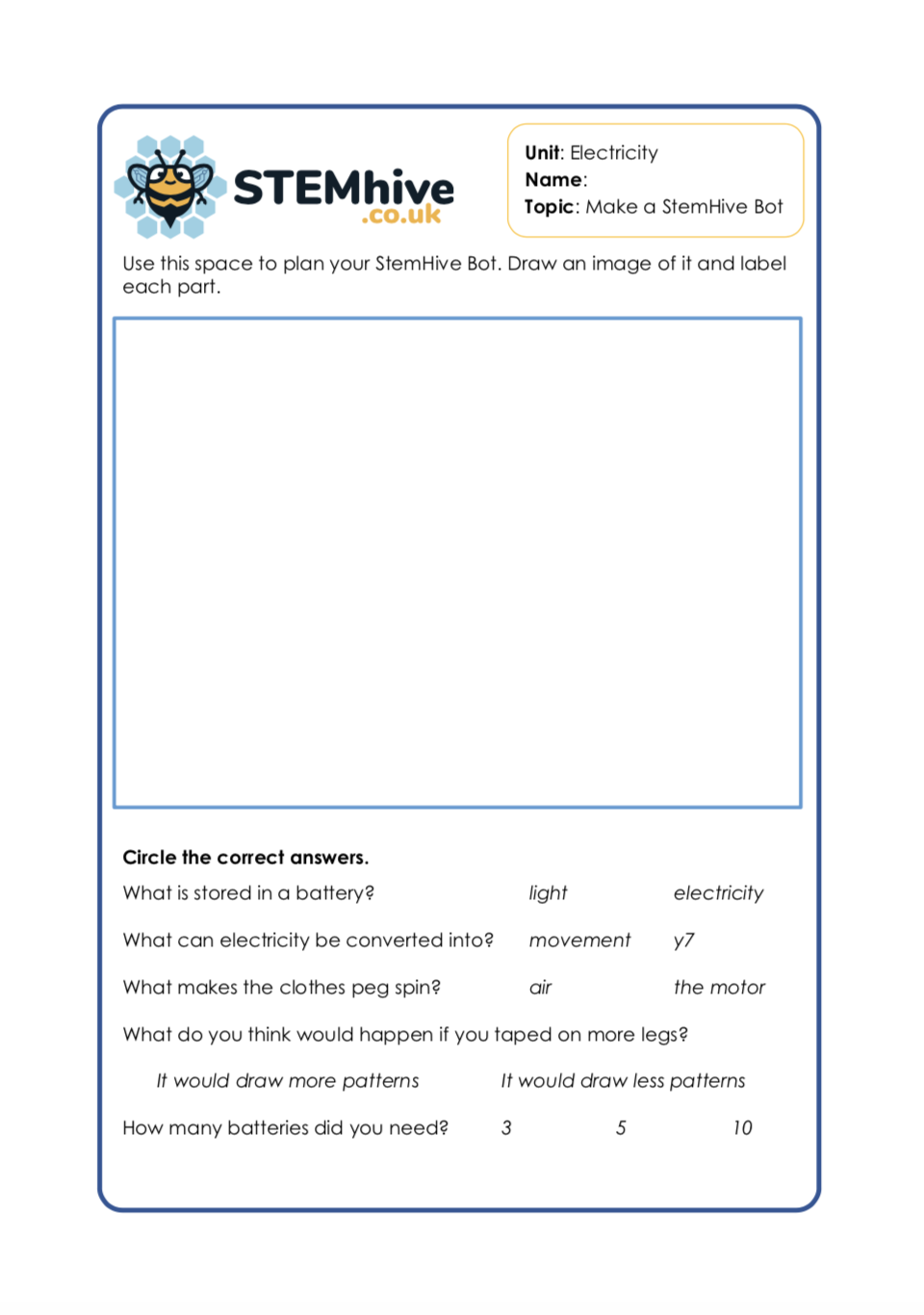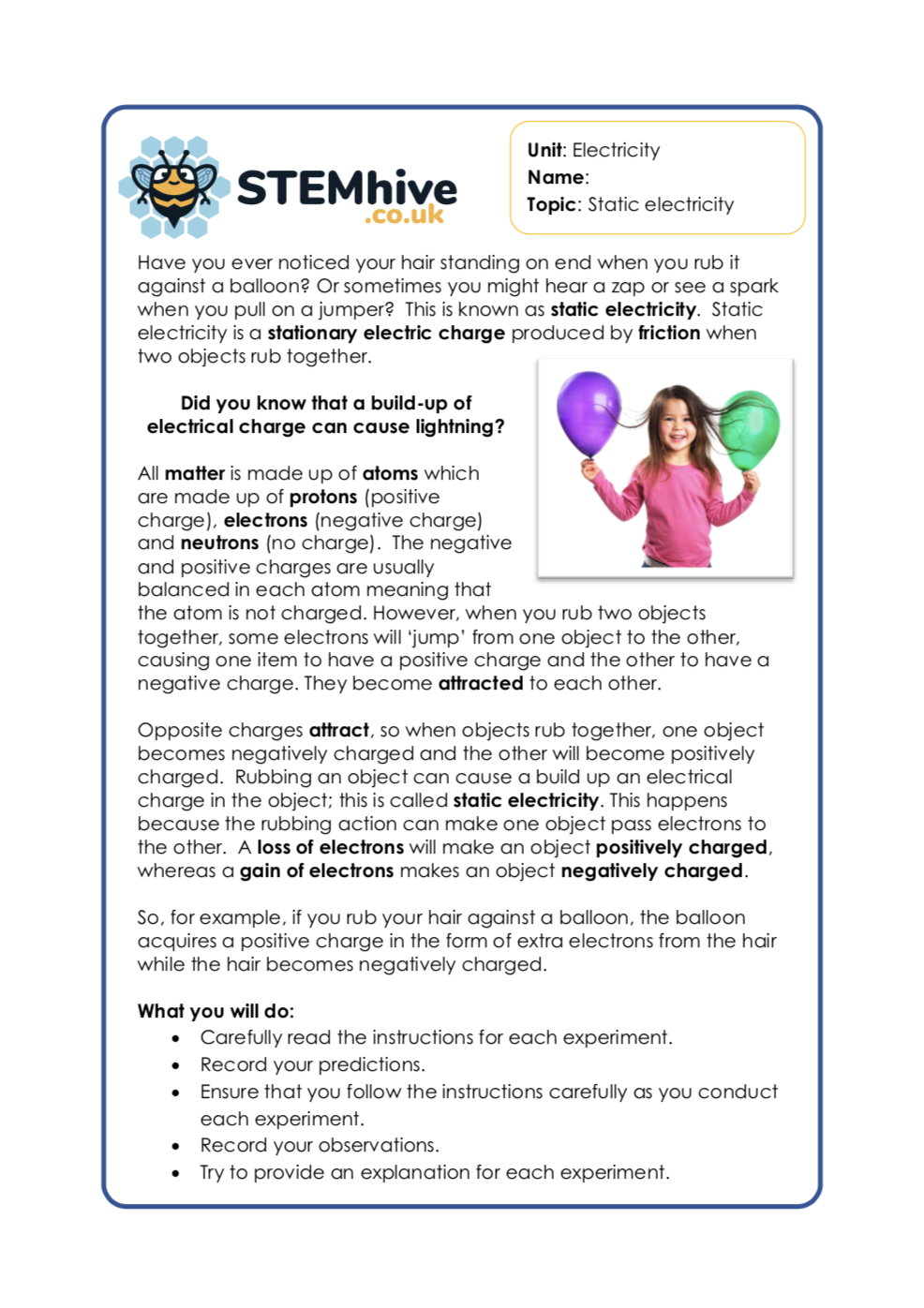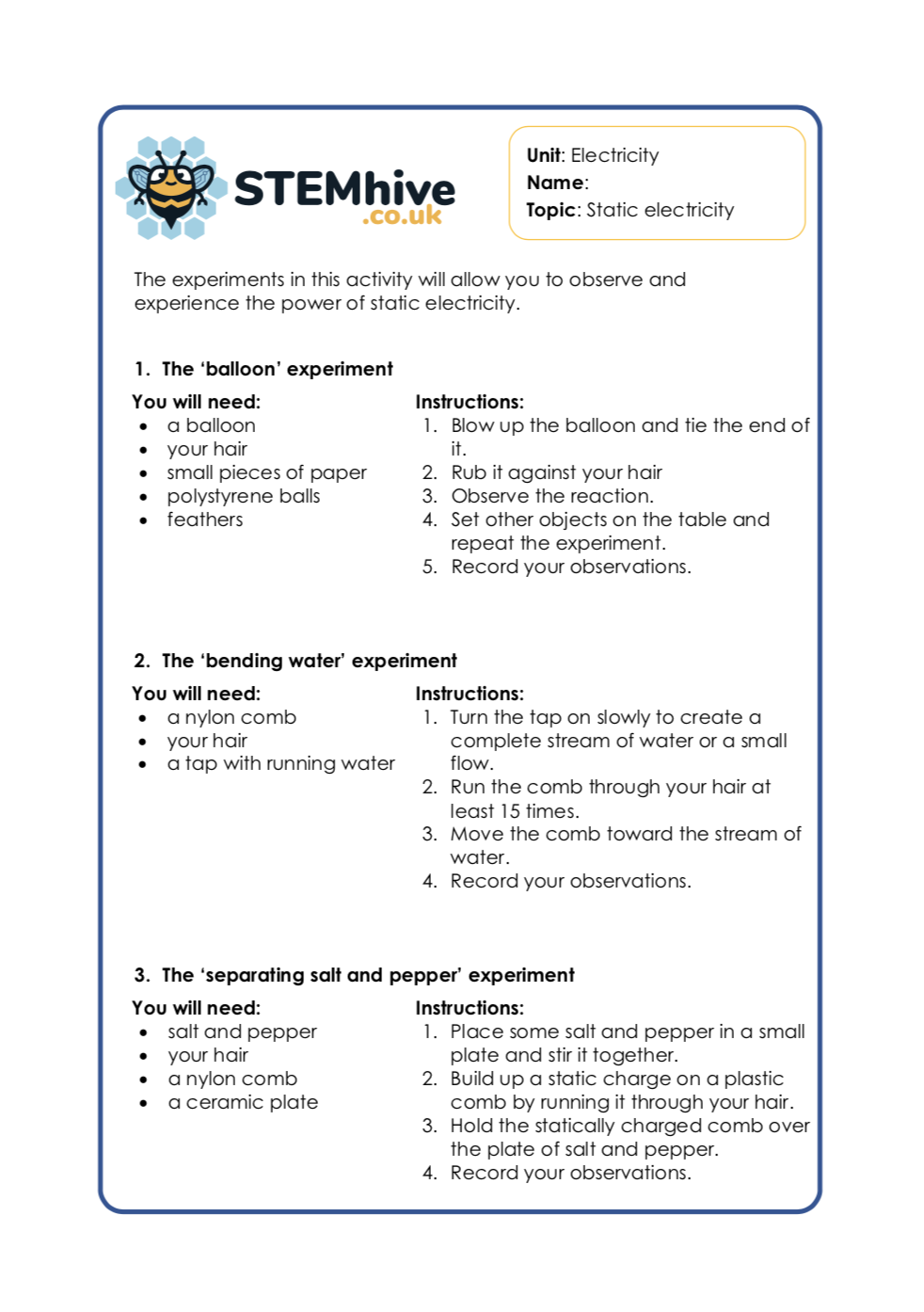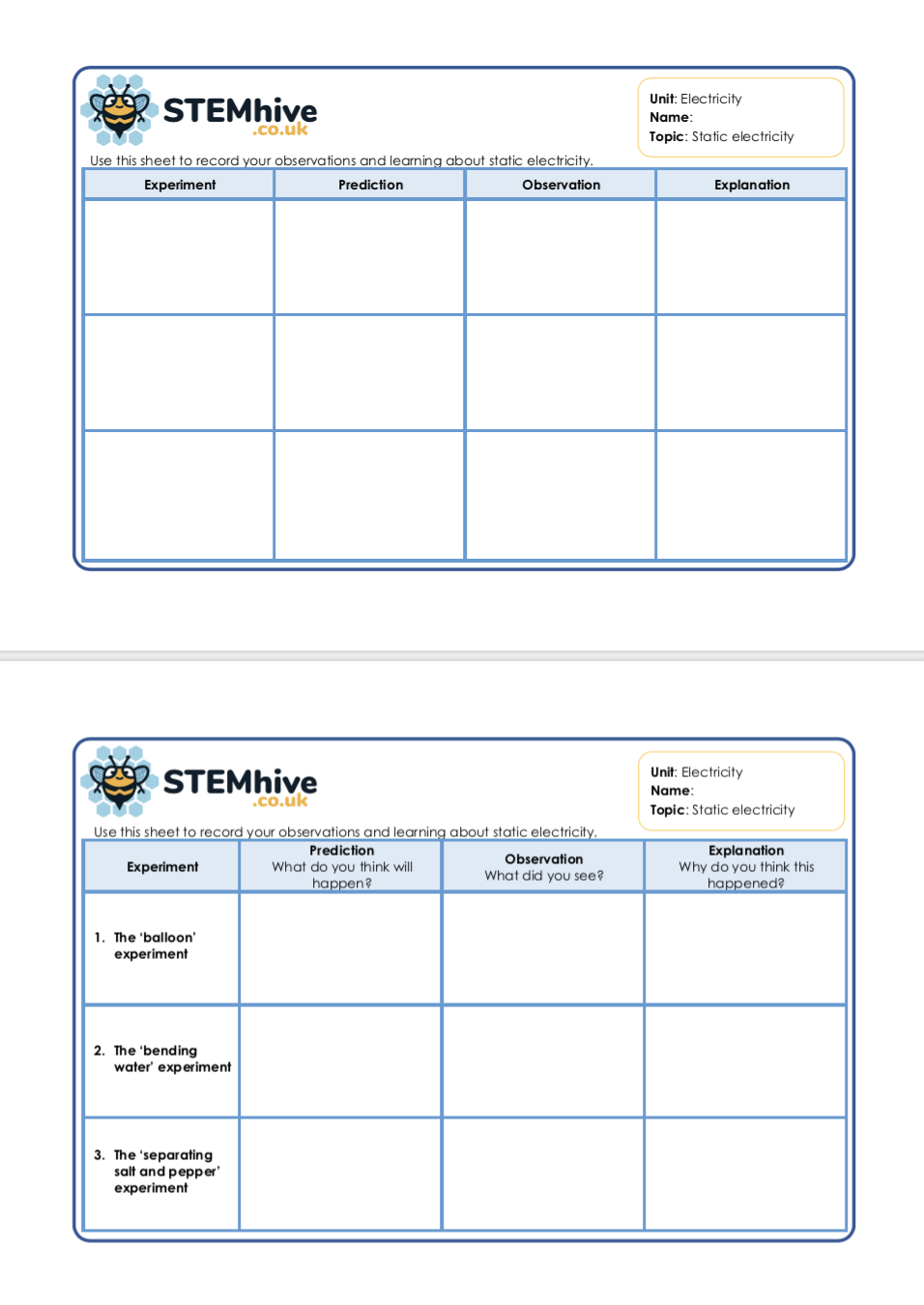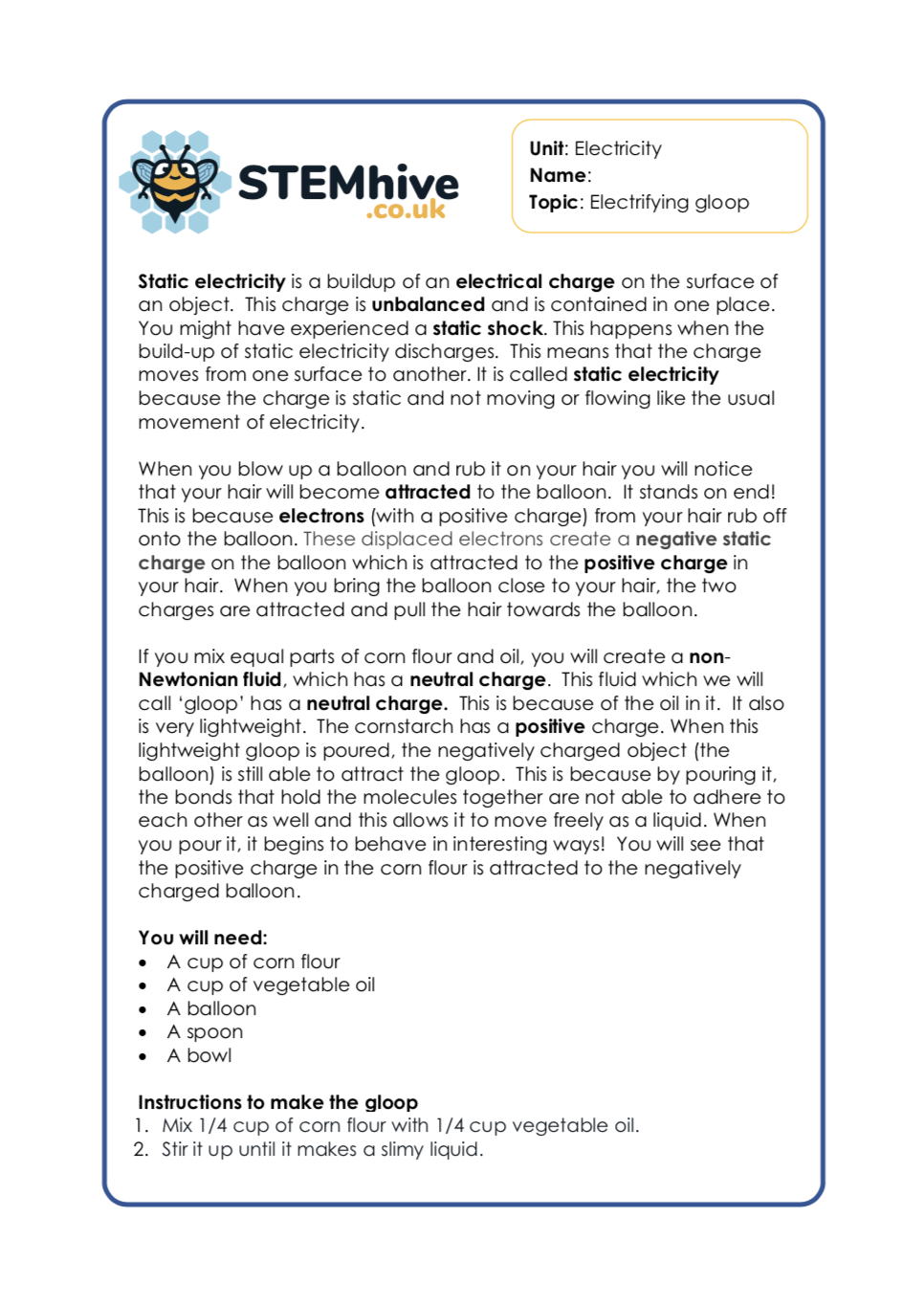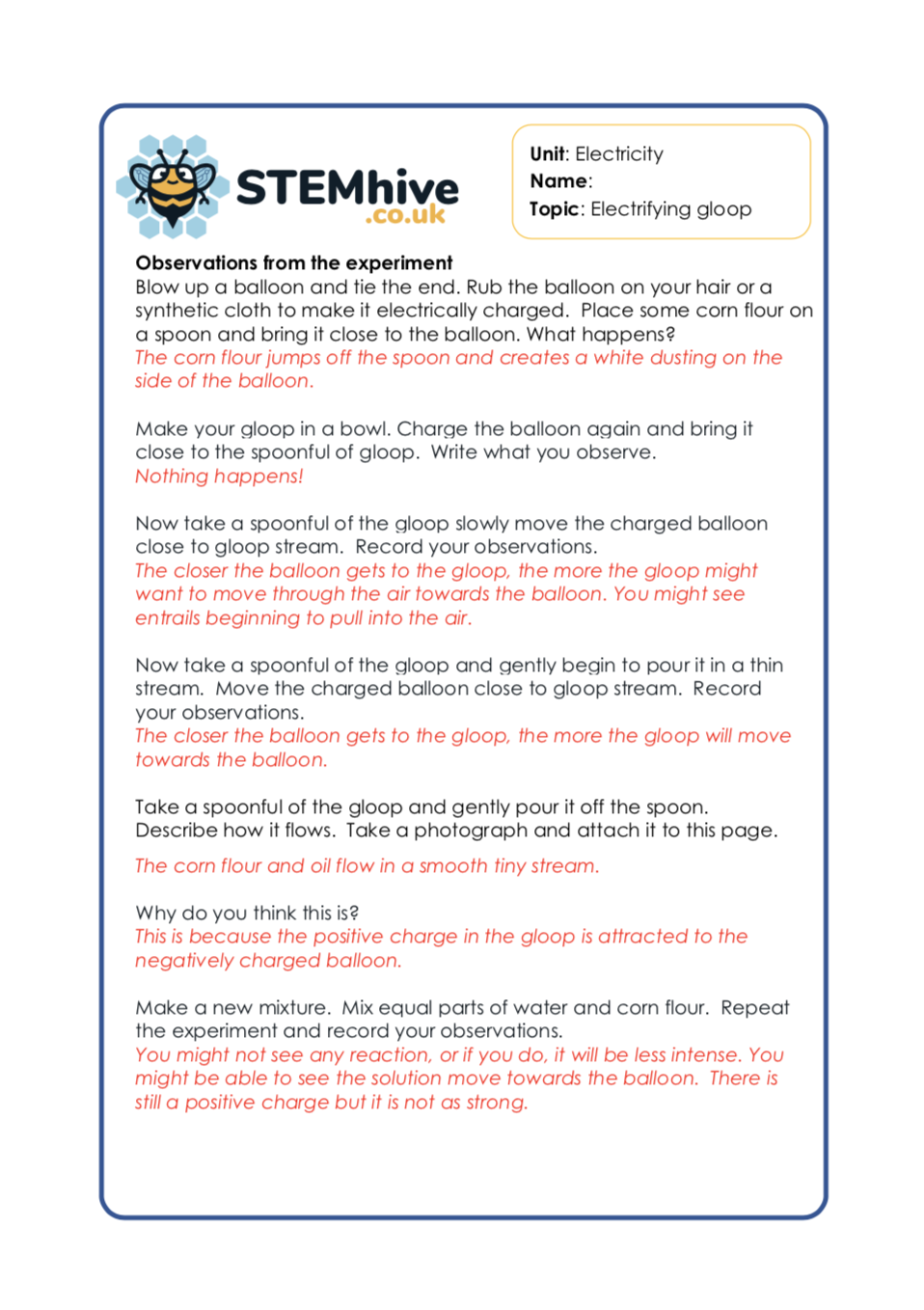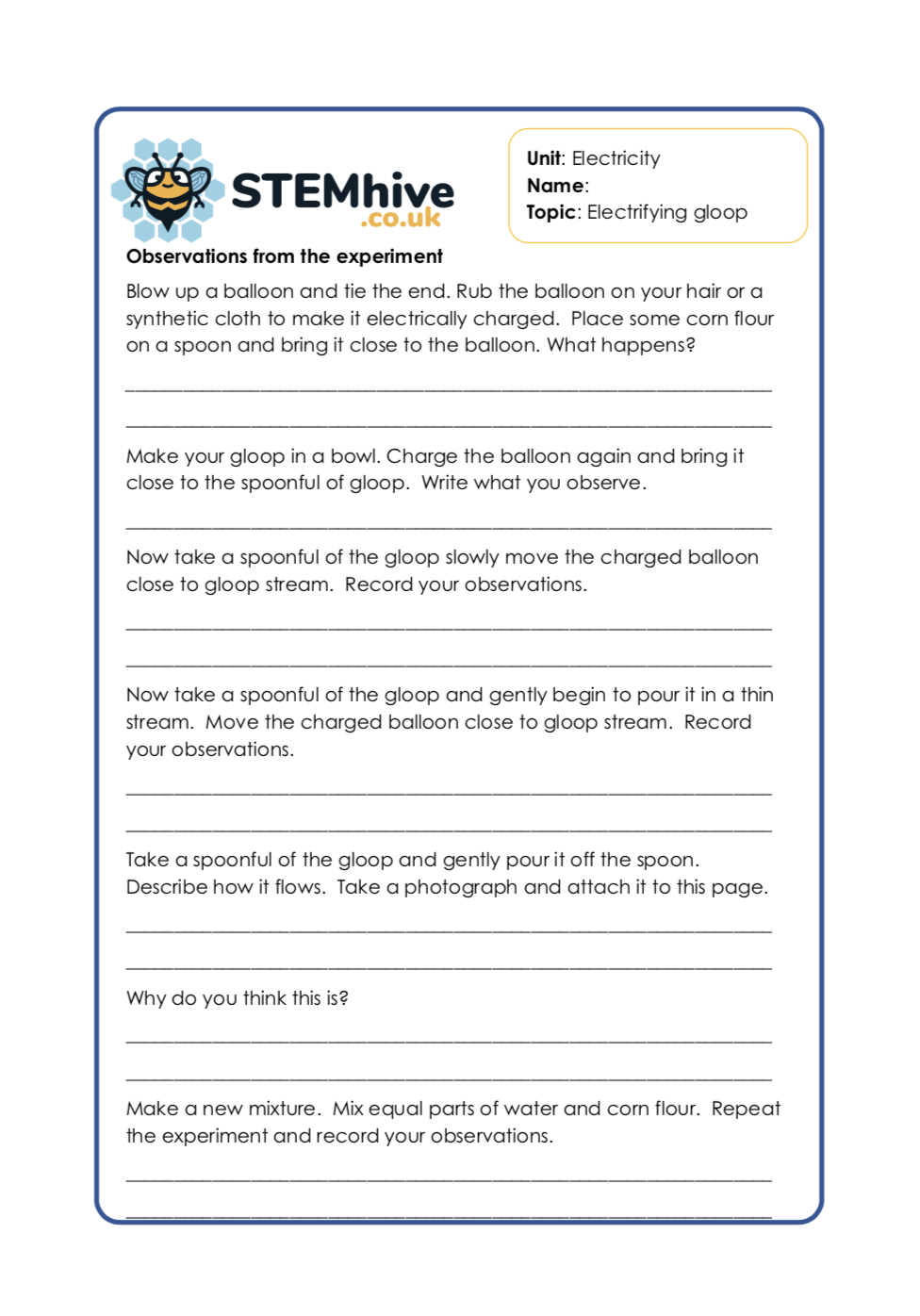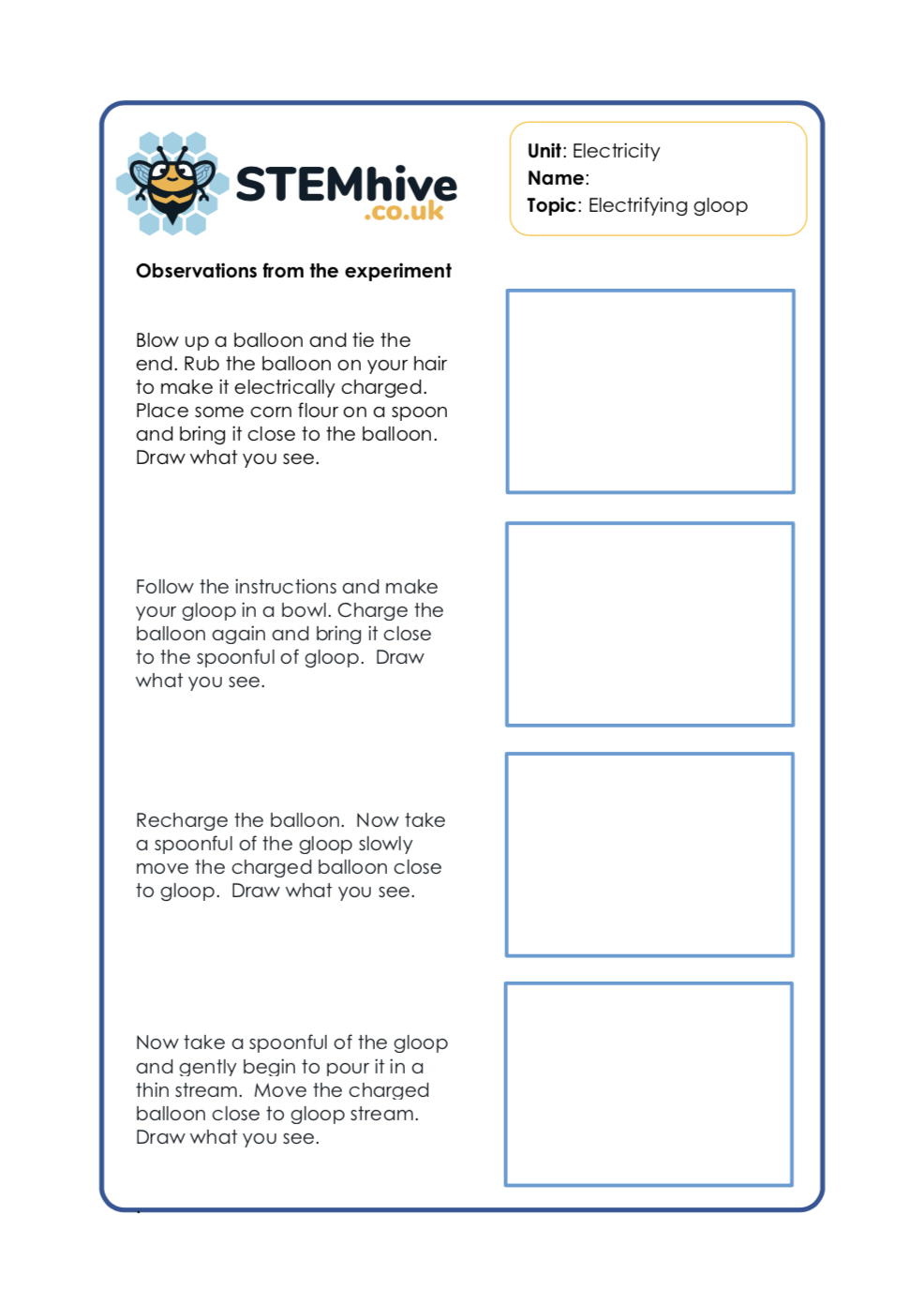Electricity
Main Focus: What is electricity? & Making a lemon battery
In this science experiment, your KS2 class will build a lemon battery also known as voltaic cell. They may already have tested a range of materials and decided if they are conductive or insulating. If so, they can use this knowledge to help in this experiment.
What is electricity?
This is not an easy question to answer! Electricity is all around us and it is hard to escape it even in nature! It powers technology like our lights, mobile phones, computers, ovens and televisions. Our body relies on electric impulses to ensure that our heart and brain function. We feel the zap of static electricity when we touch something that has been ‘charged’ and we see lightning in nature which is also electricity!
Main Focus: Earth Battery
This is a fantastic experiment that will blow your KS2 class’s minds! Your Year 5 and Year 6 class will read the science behind what a battery is a how it generates power.
A battery is a source of energy which provides a push, or a voltage of energy to get the current flowing in a circuit. Batteries provide handy and convenient power supplies from cells as small as a fingernail to those as large as a desk. They power many of our everyday items such as mobile phones, watches, cars, calculators and even hearing aids and pacemakers.
But did you know you can make a battery using soil?
Rich damp soil rich in microorganisms or compost can be used as a medium to generate electrical power in microbial fuel cells (MFCs). This means that soil can be used to convert chemical energy from soil organic compounds into electricity.
Main Focus: Potato Powered Clock
What’s not to love about potatoes? They can be mashed, chipped, baked and roasted. But did you know they can also be made into a clock? That’s right, a potato can be used as a battery to power a simple clock.
This is a brilliant experiment for your KS2 class to complete during their topic on electricity. We have included an instructions sequencing activity, cloze activity of key vocabulary and resource to support and record your experiment. As well as those mentioned, we have a resource explaining the science behind the experiment so your Year 5 and Year 6 class can develop their understanding.
A potato battery is called an electrochemical battery, or an electrochemical cell. An electrochemical cell is a cell in which chemical energy is converted to electric energy by a spontaneous electron transfer. In this potato powered clock experiment, the acid within the potato reacts with positive and negative metal electrodes also called conductors. Here, the electrodes are the galvanized zinc nail and the copper wire. The potato flesh acts as a hedge between the zinc in the nail and the copper in the wire. To make the electron transfer take place, two different types of metal must be used.
Main Focus: Making a steady hand game
This activity is linked to circuits and shows your children what a circuit is in a fun way.
In this activity, your KS2 class will make a game where they will have to move a wire ring around a ‘bendy’ course without touching the sides.
To make the game, your class must create an electric circuit with a break or a gap in the circuit. This will ensure that the circuit is kept ‘open’ and the LED cannot illuminate.
The aim of the game is to pass the wire ring the whole way around the course without completing the circuit. If your kids do allow the wires to touch, you will close the circuit, allow electricity to flow around the circuit and a light will show indicating that you have lost the game.
Your class must read the instructions carefully before creating their game.
Main Focus: Vocabulary and Terminology
In this activity, your class will use the word bank to use and apply what they have learnt about electricity.
They will show their understanding bu adding in the vocabulary to complete the sentences.
We have differentiated this science resource to cater for Year 5 and Year 6, KS2 classes.
Your class will explore the following vocabulary…
buzzers, solar, insulators, terminal, rechargeable batteries, conductors, non-renewable, direction, chemical, glass, source, positive, covering, batteries shock, gas, mains, iron and complete.
Main Focus: Creating an Electroscope
An electroscope is an early scientific
instrument used to detect the
presence of electrical charge on an
item. It detects electrical charge by
the movement of a test object due to
the Coulomb electrostatic force on it.
The electroscope usually consists of a
pair of thin gold leaves suspended
from an electrical conductor (wire)
that leads to the outside of an
insulating container. When you put an
electroscope near other statically
charged objects, the leaves or charge
strips, will move depending on
whether they are attracted to or repelled by an item or appliance such as a TV. Like charges repel each other while opposite charges attract each other.
In this experiment your class will make a simple electroscope. As they move a charged item close to the electroscope, electrical charges are detected by the tin foil leaf which then move either towards or away from the item depending on the charge. This means that they can tell if the item is positively charged or negatively charged.
Main Focus: Design a moving STEMhive Bot
Electricity can be stored in batteries and can then be converted into heat, movement and light.
In this experiment you will make a little StemHive Bot that uses a battery to power a motor which will vibrate due to an offset in balance. As it jiggles around on a piece of paper it draws fun, interesting designs using pens.
Main Focus: Static Electricity Investigations
Have you ever noticed your hair standing on end when you rub it against a balloon? Or sometimes you might hear a zap or see a spark when you pull on a jumper? This is known as static electricity. Static electricity is a stationary electric charge produced by friction when two objects rub together.
The experiments in this activity will allow your class to observe and experience the power of static electricity in a range of ways…
The balloon experiment, bending water experiment and separating salt and pepper experiment.
Main Focus: Experiment Templates
Download the templates for the science experiment above to look at predictions, observations and explanations.
Unlock ResourceMain Focus: Electrifying Gloop Experiment
This is a great experiment to create electrifying gloop with your 9-11 year old kids. Once your class have followed our instructions to create the gloop, they will record their observations being guided by our key questions and points.
If you mix equal parts of corn flour and oil, you will create a non- Newtonian fluid, which has a neutral charge. This fluid which we will call ‘gloop’ has a neutral charge. This is because of the oil in it. It also is very lightweight. The cornstarch has a positive charge. When this lightweight gloop is poured, the negatively charged object (the balloon) is still able to attract the gloop. This is because by pouring it, the bonds that hold the molecules together are not able to adhere to each other as well and this allows it to move freely as a liquid. When you pour it, it begins to behave in interesting ways! You will see that the positive charge in the corn flour is attracted to the negatively charged balloon.

